
* A Distributed Proofreaders Canada eBook *
This eBook is made available at no cost and with very few restrictions. These restrictions apply only if (1) you make a change in the eBook (other than alteration for different display devices), or (2) you are making commercial use of the eBook. If either of these conditions applies, please check with an FP administrator before proceeding.
This work is in the Canadian public domain, but may be under copyright in some countries. If you live outside Canada, check your country's copyright laws. If the book is under copyright in your country, do not download or redistribute this file.
Title: Rembrandt Selected Paintings
Date of first publication: 1944
Author: Prof. T. (Tancred) Borenius
Date first posted: Aug. 17, 2018
Date last updated: Aug. 17, 2018
Faded Page eBook #20180868
This eBook was produced by: Ron McBeth, David T. Jones, Howard Ross & the online Distributed Proofreaders Canada team at http://www.pgdpcanada.net

REMBRANDT
SELECTED PAINTINGS
PHAIDON EDITION

MAN WITH A GOLDEN HELMET. (COMPARE PLATE 53).
REMBRANDT
SELECTED PAINTINGS
WITH AN INTRODUCTION AND NOTES BY PROF. T. BORENIUS
LONDON: GEORGE ALLEN & UNWIN LTD
NEW YORK: OXFORD UNIVERSITY PRESS
PUBLISHED BY THE PHAIDON PRESS
MADE IN GREAT BRITAIN
SECOND IMPRESSION . 1944
PRINTED BY HARRISON & SONS, LTD., 44-47, ST. MARTIN’S LANE, LONDON, W.C.2
PRINTERS TO H.M. THE KING
Ever since the earliest times, art in the Northern and the Southern parts of the Netherlands never had quite the same character; and in the seventeenth century this difference became more pronounced than it had ever been before. This was due to several causes. For one thing, present-day Holland and Belgium now became politically divorced from one another: Belgium continued to acknowledge the sovereignty of the Kings of Spain while Holland achieved her complete political independence. In Belgium, Catholicism remained the predominant form of religion, and this meant that, for painting, there was open, in the decoration of the churches, a vast field for the cultivation of the style of monumental design—the style of which the greatest Flemish seventeenth century artist, Rubens, was such a supreme master. Holland, on the other hand, embraced a form of Protestantism which was particularly opposed to the decoration of the places of worship: and the Dutch painters thus came to be shut off from one of the principal opportunities of developing a style of monumental design. Then, another difference between Holland and Belgium in the seventeenth century is that Holland was by far the more democratic community of the two, and a country where—as an English observer noted in 1609—if the immensely rich people were very few, the number of quite poor people was also very small; in Belgium, on the other hand, we find a much more unequal division both of political power and of wealth. Consequently, in Belgium, the painters found plenty of work in the production of great decorative paintings of historical and mythological subjects, of hunting scenes and still-life pieces on a grand scale, for the palaces and châteaux of the aristocracy; while in Holland, the painters were principally engaged in producing pictures for the much less grand homes of the well-to-do burghers, pictures generally of quite moderate dimensions and distinctly homely character—portraits, scenes from passing life, landscapes, still-life pictures and the like. In the Flemish school there is no lack of painters, whose works are of a kindred character; but they do not predominate as they do in the Dutch school. Now, if we take a general view of Dutch painting of the seventeenth century, we shall find that while the painters are rarely lacking in feeling for colour, they show, on the other hand, generally speaking, a tendency towards trivial realism and commonplace anecdote, as well as neglect of the problems of design—facts which are easily to be explained from the conditions under which Dutch seventeenth century art developed. The greatest Dutch painter of the seventeenth century, Rembrandt, was, however, an artist of deeply poetic imagination, indeed with a definite inclination towards the fantastic, and keenly interested in problems of design; and although his pupils were fairly numerous and his influence was widely felt, he is, nevertheless, something of an exception among the contemporary artists of the Dutch school, which is not dominated by him anything like as effectively as the Flemish school is by Rubens.
In many other ways, Rembrandt also forms a contrast to Rubens, the manysided, much-travelled man, and, as a painter, the head of a regular picture factory. He quite probably never left Holland—there is no conclusive evidence to substantiate a story that he once visited England. He was certainly known outside Holland during his lifetime. Charles I, for example, at a time when the master was still comparatively young, owned no fewer than five pictures by him; but it is very seldom indeed that we hear of him definitely working for a patron abroad. He devoted all his energies to his art, working incessantly and only very occasionally availing himself of the assistance of pupils in executing a picture. Even now we possess by Rembrandt more than six hundred pictures, to which must be added well over two hundred etchings and not far short of two thousand drawings—figures which in themselves are sufficient to prove his untiring and undissipated industry.
Rembrandt Harmenszoon van Rijn was the son of a miller in Leyden, Harmen Gerritszoon van Rijn, and was born in 1606, belonging thus to a much later generation than Rubens, who was born in 1577. His parents wished him to enter upon a career of learning, so he received a good education and actually matriculated at Leyden University. He left it, however, soon afterwards and was apprenticed to a local Leyden master, Jacob van Swanenburgh, a very indifferent painter, under whom, nevertheless, he studied for three years. He then went to Amsterdam where he became the pupil of Pieter Lastman, one of the most celebrated of the Dutch painters of his time, and certainly a much more distinguished artist than Jacob van Swanenburgh. Rembrandt stayed with Lastman for about six months, and then returned to Leyden. At some time during his student years, it should here be mentioned, he may also have received tuition from a third master, Jacob Pynas of Amsterdam. In Leyden, Rembrandt soon got busy on his own account; in the year 1632 he, however, left his native city for good and settled at Amsterdam where he rapidly rose to fame, acquiring considerable wealth. In 1634 he married, and we are familiar with the features of his pretty wife, Saskia van Uylenburch, from many portraits. [Plates 7, 8, 9, 37] Before many years had passed, he purchased a house of his own at Amsterdam, where he gradually accumulated a large collection of drawings, engravings and other works of art. By and by, things began, however, to go against him; his great picture, The Night Watch, finished in 1642 and representing a company of the Civic Guard of Amsterdam, did not give satisfaction; in the same year he lost his wife; and he got involved into financial difficulties which went on increasing. Finally, in 1656, he was publicly declared insolvent, and his house and the whole of its wonderful contents were sold by auction.

Fig. 1. LORENZO BERNINI: CONSTANTINE THE GREAT (1670).
Rome, Vatican, Scala Regia.
The remainder of Rembrandt's life was spent in poverty: he died in 1669, without having satisfied his creditors who had a right on a certain percentage of what he earned; and in order to evade this, Rembrandt's and Saskia's son Titus and his house-keeper Hendrickje Stoffels—both often depicted by the artist [Plates 49, 69, 72, 84, 85, 89]—established themselves as a firm of art-dealers, for which Rembrandt was to work, while all the profits were nominally to go to the firm. But his art was no longer a very valuable asset: for although to us the full greatness of Rembrandt as an artist is only revealed in the works of this last period of his activity, with their grandeur of conception, and boldness and freedom of handling, what contemporary taste in Holland was beginning to prize in art was affectation, a sham classicism of form and slippery smoothness of technique. Nevertheless, Rembrandt still received some important public commissions during these years [Plates 95, 96]—the Staalmeesters or Syndics of the Cloth Hall (1662), and two or three pictures of which now only fragments survive [Plates 76, 79, 82]—Dr. Deyman's Anatomy Lesson (1656), the Conspiracy of the Batavians (1661) and probably Moses showing the Tables of the Law to the People (1659).
Of Rembrandt as a man, the history of his life and the accounts of people who knew him allow us to form a pretty clear idea. There is ample evidence of his whole-hearted devotion to his art, and of his power of inspiring affection; also of a somewhat naive inclination towards extravagance and display and of a certain spirit of ostentation. Thus, one of his pupils tells us, that when attending art sales, as he often did, Rembrandt was wont, especially if pictures or drawings by famous artists were offered for sale, to bid so high at the outset that no further bidder came forward, and he would say that he did this to exalt the honour of his art. Also while we hear of his generosity in placing at the disposal of other artists such of his innumerable paraphernalia—draperies, arms, etc.—as they may have required, it must be admitted that in certain incidents of his personal life he cuts quite definitely a poor figure. Great as he was as an artist, he was by no means flawless as a character: but then it is very rarely that moralists can draw very comforting conclusions from the personal aspects of art history.
★
Appreciation of Rembrandt, not only spoken but also written, tends to be of a mainly descriptive nature, to be concerned, as it were, principally with the foreground of interest—the pictures, etchings and drawings by themselves, all of which is, of course, amply sufficient to hold our attention. But the art of Rembrandt also has a background in the general history of art, upon which as a rule less emphasis is laid: and if we see Rembrandt's art against that background, much becomes clear that otherwise would be difficult of explanation.
The seventeenth century, Rembrandt's century, is, in European art generally, pre-eminently the period of the Baroque. The Baroque is an artistic phenomenon, to which we can trace many counterparts in different periods of art: but for the purpose of our present enquiry we are only concerned with the European Baroque of the seventeenth century. And the important fact to bear in mind about it is that the Baroque, as here defined, was essentially a creation of Italy. Now what is it that Baroque art stands for? Speaking in very general terms, it stands for largeness and simplicity of rhythm and telling effect: also for a vital flow of movement and intensity of expression. In sculpture, Bernini is the typical Baroque artist—in none of his works more so than in his equestrian statue of Constantine the Great on the staircase of the Vatican, here reproduced (Fig. 1) for the purpose of indicating, by one typical example, the spirit and character of Baroque art. In Flanders, a splendid consummation of Baroque art is seen in the work of Rubens, who arrived at his style after years of study in Italy. In Holland, too, eyes were turned to Italy, though the national movement, going back to what we might call a Van Eyck-ian tradition of minute, matter-of-fact realism, during the greater part of the seventeenth century counted the larger number of followers. And it is amongst the artists of this type that Rembrandt stands out by contrast, as essentially a Baroque artist, influenced very decisively by Italian art. It is by bearing these facts in mind that we can arrive at a better understanding for one thing of Rembrandt's isolation in contemporary Dutch art; secondly of his relation to the main currents of European art of his time; and finally also of the features which go to make up the individual character of his art.
Now one often hears Rembrandt referred to as an artist who owed but little to foreign influence. Of course, it is true that Rembrandt did not travel extensively—he certainly never visited Italy and, all things considered, the probability is that he never went beyond the frontiers of his native Holland—I have spoken before of the fairly old, but unsubstantiated story that, towards the end of his life, he visited England. It is also true that the intimacy of Rembrandt's feeling has a peculiarly northern note, and that he very rarely shows any approach to classicism of form; but it is equally certain that Rembrandt learnt very much through study of foreign art, and especially Italian art. A piece of evidence of some importance in this connection may be found in certain memoranda, written about 1630, or at a time when Rembrandt was still quite young, by a Dutch scholar and politician, Constantine Huygens, who speaks in terms of great admiration of Rembrandt and another young Leyden artist of kindred character, Jan Lievens, expressing, however, his regret at their not wishing to go to Italy. "But I must not omit to mention," says Huygens, "the excuse in which they fold themselves and explain their inactivity; for they say that, while in the flower of their years, of which they must make the most, they have not the time to spend in travel; and furthermore, that nowadays such is the love of Kings and Princes of the North for paintings, and so careful their choice, that the finest Italian pictures are here to be seen (i.e. in Holland) and that they are brought together here into collections, whereas in Italy they are scattered far apart." It is evident from this, that Rembrandt did not despise Italian art, and he was quite right in saying that he had ample opportunity for studying it without going south, for Holland was at this time becoming a very important centre of the art market.
Indeed, a near relative of Rembrandt—Gerrit van Uylenburch, the nephew of Rembrandt's wife Saskia, was concerned, among other things, with the importation into Holland of the bulk of the very fine collection of Italian, and more particularly Venetian, pictures formed by a Venetian nobleman Andrea Vendramin, and known to posterity mainly through an album of pen-and-ink drawings after the pictures composing it—an album now in the Library of the British Museum.
More than this—Rembrandt was an omnivorous collector himself. The inventory of Rembrandt's own collection, drawn up on the occasion of his bankruptcy, is simply astonishing as a revelation of what Rembrandt not only knew, but actually himself possessed in the way of examples of Italian and Classical art. To begin with, he owned a series of casts from the Antique, as well as a number of Classical sculptures; moreover, a few pieces of more recent sculpture, among which a statue of a child attributed to Michelangelo has been identified with the lost marble figure of the Sleeping Cupid which at one time was in the collection of Charles I. Then there were Italian pictures by artists who already ranked as Old Masters: we read of a picture of Christ and the Woman of Samaria, attributed to Giorgione (Fig. 2); of the Parable of Dives and Lazarus, held to be by Palma Vecchio; of A Camp on Fire by Old Bassano; and of no fewer than two pictures ascribed to Raphael, a Madonna and Child and a Portrait Head. Of prints by and after Italian Masters, Rembrandt possessed a very representative collection—beginning with the complete work of Mantegna, and continuing the representation of the school right down to the Bolognese Eclectics, including the Carracci and Guido Reni, as well as to one of the naturalists of the tenebroso school, Ribera. Finally, Rembrandt's collection of drawings by Italian Old Masters was a very extensive one, and was long remembered, setting an example, for instance, to his pupil, Govaert Flinck, another name famous in the annals of collecting.

Fig. 2. PALMA VECCHIO: CHRIST AND THE WOMAN OF SAMARIA (c. 1520).
England, privately ownership; destroyed by enemy action.
Probably a picture which belonged to Rembrandt, who ascribed it to Giorgione.
So much for Rembrandt's opportunities of getting to know about Italian art: and if we turn to Rembrandt's work, we shall find plentiful evidence of his acquaintance with it. Indeed, one might say that Rembrandt copied everything he could get hold of—Classical statues, Italian prints, pictures and drawings, Indian miniatures and what not, and of all great artists he is perhaps the one in whose work we can trace the largest number of definite borrowings from other artists—mainly Italian artists. Up to a point like Rubens, he does not, however, give us actual copies but free translations; and it is of great interest to compare these translations with the originals, as this brings out very clearly wherein the individual character of Rembrandt's art consists.

Fig. 3. REMBRANDT: THE VIRGIN AND CHILD WITH THE CAT: AND JOSEPH AT THE WINDOW (1654).
Etching (H.275).
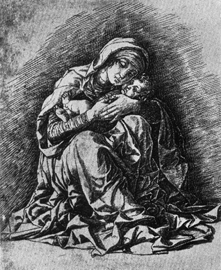
Fig. 4. ANDREA MANTEGNA: THE VIRGIN AND CHILD.
(c. 1460). Engraving (B.8, T.B.1).
Let us take one of the most striking instances first. It is provided by Rembrandt's etching of 1654 The Virgin and Child with the cat: and Joseph at the Window (B. 63; H275), here reproduced (Fig.3) alongside Mantegna's engraving The Virgin and Child (B.8, T.B.1) (Fig. 4). A glance at the two compositions is sufficient to make us realize that Rembrandt has derived the whole of the idea of his group of the Madonna and Child from Mantegna—introducing a number of variations no doubt, and using his own language of form, but still upon many points—such as the placing of the Virgin's head and the disposition of the Child's feet—following his prototype with remarkable closeness. The analogy has, of course, no direct bearing on the question of Rembrandt's connection with the Baroque, as Mantegna belongs to a much earlier period of art: but this analogy does useful service as a piece of evidence that Rembrandt was alive to certain qualities of Italian art which remain fundamentally common to several of its successive stages. And here we may for a moment consider the question of how it is that Rembrandt will follow another artist so closely as he does in this instance, seeing that, if anyone, he was not deficient in inventive faculty. This, I am afraid, must remain a mystery, and all I can say is that similar remarks are suggested by the work of many other great artists. Nothing, I feel, can be urged against them for having acted as they did, and to the students of art history their borrowings often provide the most valuable clues as to how unexpectedly the currents of influence will run in the history of art. Raphael, for instance, in his frescoes in the Vatican, had to deal with the problem of representation of the crowd—a problem which half a century earlier Donatello had tackled in his bas reliefs of the Altar of the Santo at Padua. Now, though we have no written evidence, it is an indisputable fact, that Raphael was impressed by Donatello's performance: but what clinches the argument is that in the School of Athens three figures are bodily copied from Donatello—and again we may be sure that Raphael essentially was an artist who had no need of such expedients.
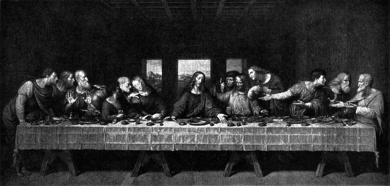
Fig. 5. LEONARDO DA VINCI: THE LAST SUPPER (1497).
From an engraving by Raphael Morghen.

Fig. 6. REMBRANDT AFTER LEONARDO DA VINCI: THE LAST SUPPER.
Drawing (1635) in the Berlin Print Room.
Another illuminating juxtaposition is that of Leonardo da Vinci's fresco of the Last Supper at Milan (Fig. 5) and a drawing (now in the Berlin Print Room) made by Rembrandt after some reproduction of that work—he never saw the original (Fig. 6). Now if we compare the two we shall find not only that Rembrandt has done away with the classical regularity of Leonardo's types, substituting for it a great coarseness; but also how his endeavour has been to produce as vigorous and striking an effect of movement as possible. With this end in view, he has introduced various modifications into Leonardo's design: the groups immediately to the left and right of Christ have been drawn much closer to Him, and at either end we have no longer the reposeful horizontals balancing one another, but quite irregular silhouettes which in no way correspond to one another, and new and very dramatic motifs. By his endeavour to produce this effect of intense movement and dramatic life, Rembrandt is following what we have found to be the main tendency of the Baroque: and one of the few authentic pronouncements of Rembrandt on his aims as an artist which are known to us deserves to be quoted in this connection. It occurs in a letter which he wrote in 1639 to the secretary of the Prince of Orange, for whom he had just finished two pictures; and Rembrandt now offers to deliver them "for the delectation of the Prince, as the utmost and most natural animation has been achieved in them" and it is for this reason that they have been so long in hand. One of the pictures in question represents the Resurrection of Christ and is now in the Gallery at Munich (Fig. 7); and while it certainly shows that "most natural animation" of which Rembrandt speaks, it also reveals the tendency towards grotesqueness and exaggeration which is by no means a rare feature in the earlier work of Rembrandt. But to return to the question of the relationship existing between Rembrandt and Italian art. Reproductions are here given of a picture of a Sibyl by Domenichino, an artist of the Bolognese school of the early seventeenth century (Fig. 8) and a picture by Rembrandt of the same subject, a very late work of the artist's, executed about 1667, and now in the Metropolitan Museum, New York (Fig. 9). It is evident from a comparison of these two pictures, that Rembrandt must have been acquainted with one of the many variations on this motif by Domenichino; and cases like this make one realize very vividly how deeply Rembrandt is indebted to his study of Italian art for his power of simple and imposing, as well as decoratively effective design; but because there is in Rembrandt concurrently a very pronounced tendency towards irregular rhythm of line and accidental picturesqueness of effect—qualities which are so radically opposed to the typically Italian qualities of regularity and balance—people are apt to lose sight of the fact that Rembrandt owes a great deal to the Italians.
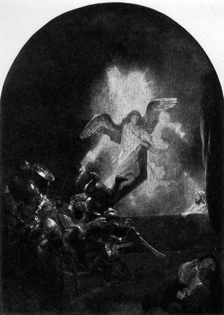
Fig. 7. REMBRANDT: THE RESURRECTION (1639).
Munich, Aeltere Pinakothek.
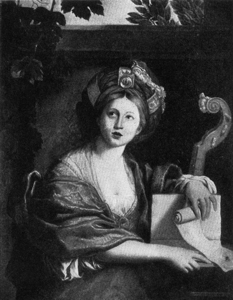
Fig. 8. DOMENICHINO: THE CUMAEAN SIBYL (c. 1625).
Rome, Galleria Borghese.
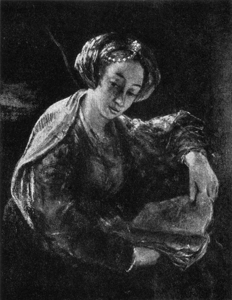
Fig. 9. REMBRANDT: A SIBYL (c. 1667).
New York, Metropolitan Museum of Art.
A very essential difference between these two pictures may, of course, be found in the treatment of light and shade, Rembrandt's method of chiaroscuro being a most powerful means of conveying to us an intensely mysterious and fantastic mood, of which there is no trace in Domenichino. Now Rembrandt's method of chiaroscuro, though independent of Domenichino, has undoubtedly its origin elsewhere in Italian art.

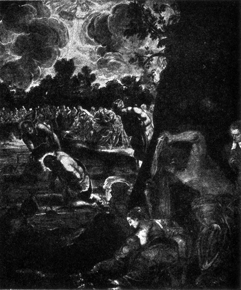
Figs. 10 and 11. TINTORETTO: ADORATION OF THE SHEPHERDS—BAPTISM OF CHRIST (1577-81).
Venice, Scuola di San Rocco.
In Italy, the ancestry of Rembrandt's method of treating light and shade can, in its full development, ultimately be traced back as far as Tintoretto. I am here mentioning a master who is perhaps the most influential single artistic force in the whole of the history of painting, from the end of the sixteenth century down to our own times: and Tintoretto's great gift to art, above all others, was, I think, his method of using light and dark masses, one standing out against the other, in alternating succession of silhouettes. The magnificent sweep of line or tornado-like rush of movement, the superb rhythmic harmony of his designs; his consummate mastery of colour, atmosphere and brushwork—to all this Tintoretto's method of contrasting light and shade is ultimately the life-giving touch. He subordinates everything else to this obsession of his. Ruskin, in noticing that some of the dark heads in Tintoretto's pictures appear relieved against a halo of light, vouchsafes the information that "the daguerrotype has proved this to be quite a realistic effect." But how little Tintoretto really cared for verisimilitude in this respect! For the purpose of articulating his compositions effectively, his resources of lighting contrivances were as unlimited and as arbitrary in their application as those of any stage-electrician of to-day. We can see that with particular clearness from such a classic example of Tintoretto's style of chiaroscuro as his Baptism of Christ in the Scuola di San Rocco in Venice (Fig. 11) where the whole of the composition is built up on a most elaborate system of contrasted silhouettes, light upon dark and dark upon light, and where his completely arbitrary use of reflected light, whenever the design demands it, is most strikingly evidenced in the figure in the extreme foreground, stripping himself. And how extraordinarily Rembrandtesque is not all this, by anticipation!
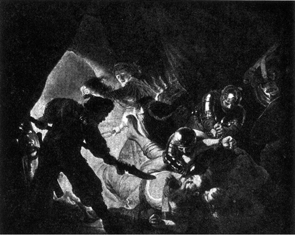
Fig. 12. REMBRANDT: THE BLINDING OF SAMSON (1636).
Frankfort, Staedel Museum.
Take another instance from the work of Tintoretro, the Adoration of the Shepherds, also in the Scuola di San Rocco (Fig. 10), a scene of an indescribably magic and haunting effect of chiaroscuro, the light penetrating the stable through the open timber of the roof, and the design being again built on contrasting silhouettes, though this is not carried through in the almost mechanical fashion noticeable in the Baptism. Added to the treatment of light and shade, the homely realism of the figures, and the setting, make us feel that we are here getting very near indeed to Rembrandt.

Fig. 13. REMBRANDT: THE SUPPER AT EMMAUS (c. 1629).
Paris, Musée Jacquemart-André.
And, if we turn to the work of Rembrandt, there is no lack of examples in which, conversely, the distance from Tintoretto strikes us as being very small. Take a work such as his Blinding of Samson of 1636 (Fig. 12) known to many generations of students in the possession of Count Schönborn-Buchheim of Vienna, but now in the Staedel Museum at Frankfort. This simply could not have come about but for Tintoretto, so extraordinarily close is the approach to him, in the turbulent rhythm of line, in the composition, and above all in the use of light and shade with a view to getting as strikingly contrasted silhouettes as possible. I will quote yet another instance, quite an early work by the master, The Supper at Emmaus in the Musée Jacquemart-André in Paris (Fig. 13) dating from about 1629: it bears out all I have said of Rembrandt's adoption of Tintoretto's methods of chiaroscuro. And, incidentally, how close do we not get in this scene of exaggerated dramatic agitation to some of Tintoretto's rowdy Last Suppers and other Biblical banqueting scenes, in which chairs are upset and people fling themselves about, throwing all self-control to the winds.
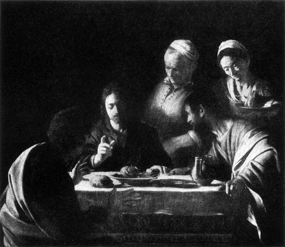
Fig. 14. CARAVAGGIO: THE SUPPER AT EMMAUS (c. 1595).
Milan, Brera Gallery.
In the history of Italian art, it was upon the shoulders of Caravaggio that the mantle of Tintoretto in a sense descended. I think there can be no doubt that Caravaggio's forceful naturalism is derived from Tintoretto and the same is true of his treatment of light and shade, though there is this important difference—that Caravaggio favours what has been called a cellar-lighting with the most unmitigated and violent oppositions of tone, glaring patches of light next to large masses of unbroken shadow (Fig. 14), whereas Tintoretto—and after him Rembrandt—very largely depends upon the effect of reflected light, playing across the shadows. Still, I think there can be no question but that Rembrandt owes Caravaggio a considerable debt: and if we look at such a picture by Caravaggio as his Penitent Magdalen in the Palazzo Doria-Pamphili in Rome (Fig. 15) we shall find in this uncompromisingly naturalistic study of a plain girl asleep an astonishingly complete anticipation of many of Rembrandt's methods. To what extent Rembrandt had first-hand acquaintance with Caravaggio's work is difficult to say: on the whole it may be doubted whether by then many examples of Caravaggio's art had found their way to Holland; but close at hand there was the whole of that interesting school of Caravaggio-imitators at Utrecht, the principal one of whom was Gerard van Honthorst, of whose peculiar effects of illumination by candle-light there are some very palpable imitations in the work of Rembrandt.
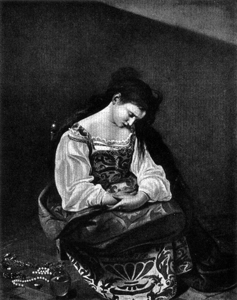
Fig. 15. CARAVAGGIO: THE PENITENT MAGDALEN (c. 1595).
Rome, Palazzo Doria-Pamphili.
Then there is the case of Ribera—an artist whose etchings we know that Rembrandt did possess and whose pictures too we may be certain were known to him. A picture which offers valuable evidence in this connection is the Descent from the Cross in the John and Mabel Ringling Art Museum at Sarasota (Fig. 16). Although bearing a Rembrandt signature (and the date 1650) the authenticity of the picture was for a while doubted; but opinion has lately again veered round in favour of Rembrandt's authorship. However, the actual question of attribution matters comparatively little for the purpose of our present enquiry: it is enough that the picture should reflect the tendencies of Rembrandt's immediate circle. Here not only are the oppositions of tone more forced than is usual with Rembrandt, and singularly reminiscent of Ribera, but even the character of the forms and the arrangement of the composition make one think of him (compare Fig. 17).
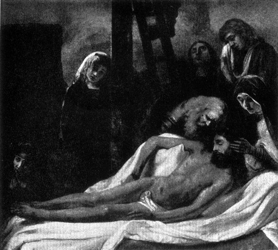
Fig. 16. REMBRANDT: DESCENT FROM THE CROSS (1650).
Sarasota, John and Mabel Ringling Art Museum.
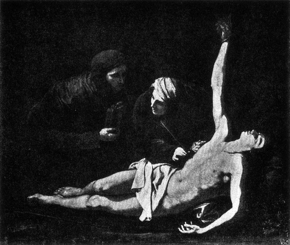
Fig. 17. RIBERA: ST. SEBASTIAN AFTER HIS MARTYRDOM (1628).
Leningrad, Hermitage.
Yet another artist who, although a German by birth, ranks in the history of art as a member of that Roman school of the seventeenth century which is of such vital importance for the development of European art, and who must be considered in any discussion of Rembrandt's treatment of chiaroscuro is Adam Elsheimer. This painter, a native of Frankfurt, who settled in Italy about 1598, and died at Rome while still quite young in 1610, painted practically only landscapes, of very small size and distinguished by an extraordinary softness and tenderness of illumination and richness of atmosphere; and it is quite clear that the art of Elsheimer made a most powerful impression on Rembrandt, directly as well as indirectly through Lastman. Take such a picture by Elsheimer as his Flight into Egypt in the Munich Gallery (Fig. 19), revealing an interest which comes to the fore in several of Elsheimer's works, the study of complicated effects of light. The darkness of night is here broken by the emanation of light from several different sources: the torch carried by St. Joseph, the fire round which the shepherds have gathered and the moon which is just rising on the starlit sky over the dark masses of foliage and is reflected in the calm waters of a lake. Now let us turn to a picture of the same subject by Rembrandt, painted in 1647 and belonging to the National Gallery of Ireland in Dublin (Fig. 18). Here we see, in the foreground, the Holy Family resting by the fire, lighted by some shepherds and reflected in a little pond: the moon is just breaking through the clouds and the masses of foliage and the castle with lights in its windows tell as a dark silhouette against the sky. The picture is so similar in composition and effect, to the one by Elsheimer just shown, that judging merely from reproductions one might almost be tempted to think that they are by the same artist: there is, however, undoubtedly a far greater freedom of handling and richness of tone in the picture by Rembrandt.
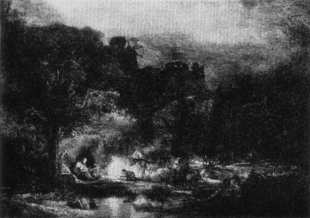
Fig. 18. REMBRANDT: THE FLIGHT INTO EGYPT (1647).
Dublin, National Gallery of Ireland.
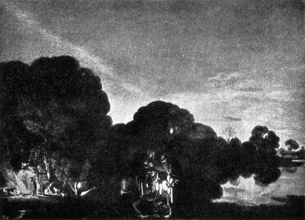
Fig. 19. ADAM ELSHEIMER: THE FLIGHT INTO EGYPT (1609).
Munich Gallery.
Many more examples, bearing upon the points I have been endeavouring to make could easily be accumulated: but from what I have said I hope it is abundantly clear to what an extent Rembrandt, although all the time giving evidence of his individual bent, yet was influenced by Italian art; to what an extent his art is an exponent of tendencies which are characteristic of the Baroque generally. And while, as I have said, this differentiates him from the bulk of artistic endeavour in the Dutch school of the seventeenth century, I am anxious not to be misunderstood as if wanting to convey that Rembrandt was absolutely unique in this assimilation on his part of qualities in the art of Italy. We can trace a whole group of kindred phenomena in Dutch seventeenth century painting, and another of the very greatest artists of the school, Jan Vermeer of Delft, offers a case in point, although with Vermeer the working of the Italian influence is for the most part of a much more mysterious nature, much more difficult to analyse and demonstrate than is the case with Rembrandt. Now as regards Rembrandt and Italian art, an enquiry such as I am here sketching can be rounded off in a most interesting fashion by going into the question as to how contemporary Italy reacted to Rembrandt's art. Concerning this question we possess some extremely remarkable information which has come to light not so very long ago, and which deserves to be much more widely known than it is.
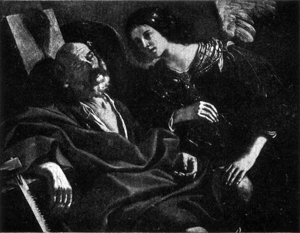
Fig. 20. GUERCINO: THE ANGEL APPEARING TO ST. JOSEPH (c. 1625).
Naples, Palazzo Reale.
By the middle of the seventeenth century it is clear that the fame of Rembrandt had penetrated into Italy. So far as the available evidence goes, the person who must be mentioned by preference to anyone else, among the contemporary admirers of Rembrandt in Italy, was a member of a great Sicilian noble house, Don Antonio Ruffo, who lived at Messina. Don Antonio, who was a great art collector, ordered of Rembrandt direct three pictures for his gallery: the first of these painted in 1653, being the picture of Aristotle, now belonging to Messrs. Duveen of New York [Plate 60]; and the two others, dating from about ten years later, being a Homer [Plate 98]—doubtless the picture of which a fragment is in the Mauritshuis at the Hague—and an Alexander which has been identified with the Mars now at Glasgow [Plate 73], though the latter for various reasons, I think, is most unlikely to be the Ruffo picture—for one thing the Glasgow picture is dated 1655 and secondly it does not show the figure seated as the Ruffo inventory describes it. Now when Rembrandt's picture of Aristotle arrived at Messina, in 1654, Don Antonio thought he would have a companion picture painted for it. He commissioned this of an Italian painter and his selection of an artist for this task is a most interesting one: for he chose Giovanni Francesco Barbieri, better known as il Guercino, one of the most celebrated of Italian Baroque painters whose art combines features of style derived both from the Bolognese Eclectics and from the tenebroso painters of the Naturalist group, headed by Caravaggio (Fig. 20). We possess the letter which Guercino in 1660 wrote to Don Antonio Ruffo in response to his invitation that he should paint a pendant to Rembrandt's picture: and it is one of the most interesting documents imaginable, imparting a character of extraordinary actuality and vividness to the whole of this curious episode. Guercino begins by saying that the picture by Rembrandt is sure to be a work of great perfection, as he has seen several etchings by the Dutch artist, which are very beautiful, engraved in good taste and executed in a good manner, allowing the inference that Rembrandt's colouring must be of equal exquisiteness and perfection: indeed, says Guercino, I sincerely hold him to be a great virtuoso. Guercino goes on to declare his readiness to paint the companion picture, adopting, as Ruffo wishes, the manner of his own early period in which light and shade are boldly contrasted—a very notable point this, since it proves for one thing that Ruffo quite rightly felt the affinity between Rembrandt's style of chiaroscuro, and that of the Naturalist school of Caravaggio; and secondly this conveys a very useful warning to art historians, not to be too sure as regards their chronologies, if based solely on the evidence of style, seeing that here Guercino, quite late in life, calmly declares: "Very well, I will paint a picture in my early manner." Guercino then asks for the size of Rembrandt's picture and that a sketch of it be sent to him so that he can design his companion figure accordingly. The picture by Guercino—representing a Cosmographer—was eventually carried out by him, but most unfortunately cannot be traced at present: it would undoubtedly be of the most absorbing interest to know what a picture looked like if painted by Guercino for the avowed purpose of harmonizing with a picture by Rembrandt. But even so, the letter from Guercino gives us all the evidence we can possibly demand as to the extent to which a leading Italian Baroque painter looked upon Rembrandt as an artist sharing his own outlook: there is not a vestige of criticism or dissent in Guercino's pronouncements, nothing but admiration and praise. Inevitably we come to wonder in this connection whether Rembrandt knew Guercino and what he thought of the Italian artist. There is every probability on general grounds that Rembrandt was acquainted with the art of Guercino: and there exist one or two pictures by Rembrandt which to me suggest something of an exercise in the manner of Guercino. I am particularly referring to the great picture of Mordecai before Esther and Ahasuerus (Fig. 21), a very late work, dating from about 1665, belonging to the King of Roumania. Though I cannot give chapter and verse as in many previous instances, I feel in the types and forms, in the colouring, chiaroscuro and character of design a very distinct echo here of Guercino's dramatic compositions of scriptural and historical subjects.
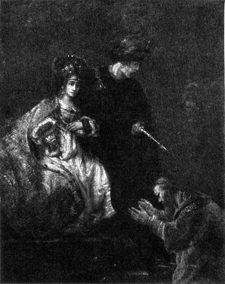
Fig. 21. REMBRANDT: MORDECAI BEFORE ESTHER AND AHASUERUS (c. 1666).
H.M. The King of Roumania.
★
In making the above general remarks on the art of Rembrandt I have referred indiscriminately to works from different stages of his career; but Rembrandt is emphatically one of those artists whose evolution takes them very far indeed from where they began; and I must now pass on to illustrate with a few examples the principal stages of that evolution into which even those of our selection of plates, not mentioned especially, will be found to fit naturally.
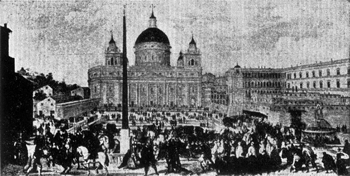
Fig. 22. JACOB VAN SWANENBURGH: SQUARE OF ST. PETER
Copenhagen, Statens Museum for Kunst.
By way of introduction, a word or two may here be said about Rembrandt's teachers. They were all of them—a point of importance—artists who had studied in Italy, where Jacob van Swanenburgh (c. 1571-1638) lived for several years in Naples and Rome. Of his scarce, and far from distinguished work, a Square of St. Peter's, Rome in the Copenhagen Gallery, offers a characteristic example (Fig. 22); it is signed and dated 1628 and thus almost belongs to the period when Rembrandt was studying under him. Jacob Pynas (c. 1585?-after 1650)—who may have been one of Rembrandt's teachers—was an artist of quite different calibre: the drawing by him here reproduced (Fig. 23) is a late production, dated 1646, curiously Rembrandtesque in character. Pieter Lastman (1583-1633) was in Rome from 1604 to 1607—years which witnessed the brief, but all-important activity of Adam Elsheimer in that city; and the example of the latter artist undoubtedly meant a great deal to Lastman. The picture by him chosen for illustration—Orestes and Pylades in the Rijksmuseum at Amsterdam, dated 1614 (Fig. 24)—shows well his adoption of the Italian manner; but one cannot help feeling the clash between the exaggerated rhetoric of the style and the tendency to a trivial and even gross realism which is characteristically Dutch and comes out notably in certain of the heads. All things considered, Pieter Lastman is little more than a tiresome and dull academic. His influence on Rembrandt was, however, far from negligible at the beginning of Rembrandt's career; and reminiscences of Lastman occur even in comparatively late works of Rembrandt; while it is of great interest to observe how Rembrandt, in making drawings after Lastman—as it almost goes without saying that he did—improves upon the composition of his teacher. Of Rembrandt's method of chiaroscuro, we find but a very slight anticipation in the art of Lastman.
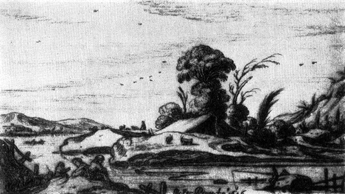
Fig. 23. JACOB PYNAS: LANDSCAPE (1646).
Red chalk.
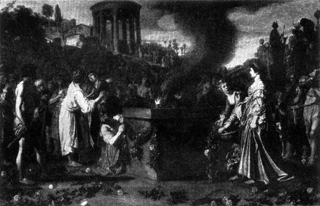
Fig. 24. PIETER LASTMAN: ORESTES AND PYLADES (1614).
Amsterdam, Rijksmuseum.
Among the early works by Rembrandt—who may be assumed to have begun working on his own in 1625—two groups immediately define themselves. We have for one thing pictures showing considerable breadth of treatment, such as is particularly well shown by his Supper at Emmaus already reproduced (Fig. 13) in which the false pathos, over-emphatic action and the tendency to grotesque realism remind one of Lastman, while there is much in it too—as hinted before—to recall Tintoretto. In other early works by Rembrandt we then find great delicacy of execution, as for instance in his Rape of Proserpine (painted about 1632) in the Kaiser Friedrich Museum at Berlin (Fig. 26) which also still has many features of style in common with the art of Lastman, while as regards the colouring, it shows the lovely harmonies of green and old gold which are so characteristic of Rembrandt.
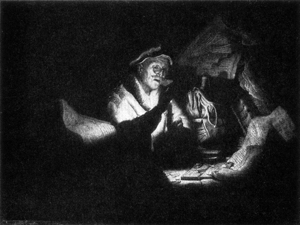
Fig. 25. REMBRANDT: THE MONEY CHANGER (1627).
Berlin, Kaiser Friedrich Museum.
Alongside sacred or mythological subjects, we then find among the early works of Rembrandt subjects from everyday life and notably a great number of portraits of Rembrandt's relatives as well as of the artist himself—he remained indeed partial to these classes of subjects all through his life—no painter ever painted his own portrait as often as Rembrandt [Plates 1, 6-9, 23, 37, 49, 58, 59, 64, 67, 72, 81, 84, 87, 91, 99]. In these portraits of Rembrandt and his relatives the sitters are frequently shown dressed up in gorgeous costumes, helmets, steel gorgets, turbans, all the trappings in short which we know Rembrandt collected with perfect passion, but which, it must be confessed, tend to produce, in certain cases, a somewhat obviously picturesque and fantastic effect.
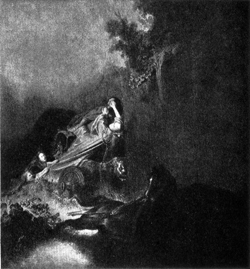
Fig. 26. REMBRANDT: THE RAPE OF PROSERPINE (c. 1632).
Berlin, Kaiser Friedrich Museum.
A different note is struck in his early pictures of scholars and old recluses, among which we will here specially instance the one in the Gallery at Turin, dated 1629 (Fig. 27). This interior of a room with an old man asleep—quite a small picture of the most delicate execution—shows Rembrandt pointing the way to a very numerous group of Dutch seventeenth century painters of homely subjects. And to mention yet another early work by Rembrandt, in his picture of a Money Changer in the Kaiser Friedrich Museum at Berlin, dated 1627 (Fig. 25) we see Rembrandt returning to the subject which one hundred years earlier had been such a favourite one with Quentin Massys and his school. The scene is lit by the candle, held by the old man, the flame being hidden by his hand—it is indeed a frequent device of Rembrandt (as of his older contemporary of the Italianizing Utrecht school, Gerard van Honthorst) to make the light emanate from the centre of the composition, the actual source being concealed; whereas Caravaggio uses strong side light coming from above.
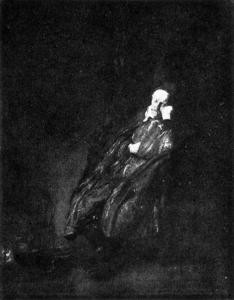
Fig. 27. REMBRANDT: OLD MAN ASLEEP (1629).
Turin Gallery. The sitter probably Rembrandt's father.
If the Dutch seventeenth century painters received but little patronage from the church, they were on the other hand frequently employed by other public bodies, on commissions which are quite peculiar to Holland. I have referred previously to the very democratic constitution of the Dutch community: the army was a volunteer force composed by all able-bodied men, the large and powerful guilds, to which the members of the various professions belonged, were administered by executives elected from amongst their number, and altogether, elected committees formed a very important part of the administrative machinery of Holland. Now it was customary for the members of these committees and bodies or burgher companies to have their portraits painted grouped together in life-size pictures, which were then hung in the assembly rooms of the respective public bodies; and to this day Holland contains an immense number of portrait groups of this kind. Among the most famous of them is a series of pictures by Rembrandt's older contemporary Frans Hals, now in the Museum at Haarlem, representing the officers of the Civic Guard of Haarlem celebrating the anniversary days of their companies. Rembrandt only painted very few pictures of this type, but three of them are among his most celebrated works and illustrate well three successive stages of his career.
The earliest of them is the picture, known as The Anatomy Lesson of Professor Tulp [Plate 5], painted in 1632 for the guild of the surgeons at Amsterdam; it represents a famous Dutch surgeon and anatomist, Nicolaes Tulp, demonstrating on the dissected body in front of him, his hearers being the members of the committee of the Amsterdam Guild of Surgeons. It is a somewhat stiff and formal composition: Rembrandt has evidently been determined to give every figure in this group of portraits an equal chance, and the light is, for him, very evenly diffused; the handling is very smooth, the whole strikes one as a piece of somewhat prosaic and literal realism. This is one of the first pictures Rembrandt executed after he had settled at Amsterdam, and to the same period belong also a number of other works, mainly portraits, exhibiting a similar style; but although Rembrandt no doubt owed something of his initial success at Amsterdam to these works [Plates 10, 11], he soon abandoned this style of relatively cold and literal realism, giving fresh emphasis to his characteristic method of chiaroscuro and developing gradually an ever greater freedom of handling.
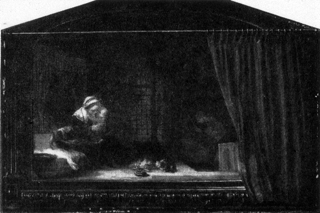
Fig. 28. REMBRANDT: THE HOLY FAMILY (1646).
Cassel Gallery.
And when, Rembrandt, ten years later, painted his second corporation picture he took up a very different attitude. The picture in question, now in the Rijksmuseum at Amsterdam, is world-famous under the title of 'The Night Watch' which came to be given to it in the eighteenth century, when it was supposed to represent a Night Watch turning out on its rounds by artificial light [Plate 33]. At the time, the picture was considerably darker than it is now that the old varnish has been removed from it; and there can be no question but that the light which strikes the figures as they emerge from the gloom of the hall or passage in the background is that of the sun, though it must be admitted that the contrasts of tone are, and always have been, somewhat unnaturally forced. As for the subject, the picture represents a company of the Civic Guard of Amsterdam leaving its Assembly Hall for a shooting competition: at the head of the men walk the captain and lieutenant of the company, and we can see that the sun is still quite high by the shadow, cast by the hand of the captain on the coat of the lieutenant. The animation of the whole is extraordinary and we do not stop to question the naturalness of the method of lighting, so magic is it in effect: but it is on record that the people who had ordered the picture were far from pleased with it, as it decidedly did not correspond to the accepted notion of a portrait group, which was that attention should not in the first place be attracted by the main action and the general effect, but by the individual portraits; and it evidently made no difference to the objectors that, although Rembrandt saw the whole picture first, yet all the individual heads are full of life and character. It must be owned, however, that admirable though it is, this picture does not as yet show Rembrandt at his greatest, producing as it does an effect of too great virtuosity: he had yet to learn a greater economy of expression, to acquire a greater intensity of feeling as well as simplicity, boldness and effectiveness.
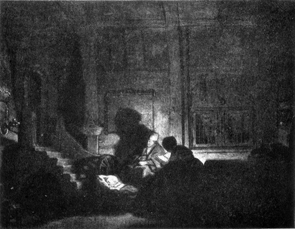
Fig. 29. REMBRANDT: THE HOLY FAMILY (c. 1644).
Formerly Downton Castle, Boughton-Knight Collection.
His development in the direction indicated took place by degrees during the remaining years of the 1640's. The character of his art is noticeably changed already in a specially remarkable picture painted four years after The Night Watch, or in 1646, and now in the Gallery at Cassel (Fig. 28). It represents the Holy Family in their humble home: the Virgin with the Infant Christ in her arms, seated in the foreground, and in the background, vaguely seen, the figure of St. Joseph cutting wood. No better instance could be chosen of the way in which Rembrandt infuses an altogether new life into the old and well-worn scriptural subjects, through the nobly and intensely human spirit in which he approaches them and the touching intimacy and simplicity of his conception. If there is anything to be criticized in this picture, it is perhaps the somewhat sophisticated device of imagining the whole as an altarpiece, the hanging in front of which is not quite pushed aside. Equally beautiful is a picture, formerly in the Boughton-Knight Collection at Downton Castle (Fig. 29) and of about the same date, in which a similar scene is treated in a similar spirit of typically Northern intimacy—again a humble interior, with the Virgin and St. Anne quietly seated by the cot in which the Infant Child is asleep, the candle, hidden by the figure of the Virgin, causing a large and phantastic shadow of St. Anne to be thrown on the wall at the back.

Fig. 30. REMBRANDT: WINTER LANDSCAPE (1646).
Cassel Gallery.

Fig. 31. REMBRANDT: LANDSCAPE WITH A RUIN (c. 1650).
Cassel Gallery.
A work which also belongs to this phase of Rembrandt's career is a tiny landscape, dated 1646, now in the Cassel Gallery (Fig. 30). Among the paintings by Rembrandt, the landscapes form a very small group, contrary to what is the case in his etchings and drawings; and here, as generally in his landscape drawings and etchings, Rembrandt has given a frankly realistic rendering of a simple and characteristic bit of Dutch scenery—a frozen canal on which some figures are moving about, and in the distance a cottage and a bridge, the whole in the clear cool light of a winter morning. This little picture is most crisply and vigorously touched, and is besides, for all its apparent simplicity, a most consummately beautiful design. In several of Rembrandt's landscape paintings he introduces, by contrast, motifs from scenery of which he had no first-hand knowledge: as he has done in a noble landscape, now also in the Gallery at Cassel (Fig. 31), and painted a little later than the one just mentioned. The hill in the distance with the lonely ruin standing out against the glowing sky of evening, is quite Italian, and this very ruin suggests one which occurs over and over again in the landscapes of Rembrandt's contemporary Gaspard Poussin—the little temple of the Sybil at Tivoli near Rome—and there can be no question but that Rembrandt had received his inspiration for this picture from the heroic landscapes of Gaspard Poussin. But just as Rembrandt loves to draw figures of the most common and pronouncedly Dutch type in the most gorgeous and exotic costumes, so he has introduced into this heroic landscape a typically Dutch windmill such as one never associates with Italian scenery. A Dutch painter who strongly influenced Rembrandt in his landscapes was Hercules Seghers (1590-c. 1640): his etchings and pictures often give quite an astonishing anticipation of Rembrandt.
★
About 1650 one may say that the characteristics of Rembrandt's final manner have become clearly pronounced, and aesthetically speaking his career represents one great crescendo, so that one may claim that the latest Rembrandts are the finest of all. His characters now get increasingly heroic, and his design acquires a quality of reposeful and monumental majesty—there is but little endeavour on his part at this stage to achieve the "greatest and most natural animation" that had been his ideal previously. Again, as regards his technique, he achieves a boldness of brushwork and fatness of impasto far surpassing anything in his previous works—purely pictorial qualities which have made Rembrandt one of the artists to whom modern painters have turned most frequently for study. In such a work as his Portrait of an Old Man, painted about 1658, and now in the Palazzo Pitti in Florence (Fig. 32), with its marvellous patriarchal dignity and vigour and freedom of execution, we are removed far indeed from the idyllic quality of conception and the daintiness and delicacy of execution in that full-length picture of an Old Man asleep at Turin, painted by Rembrandt some thirty years earlier and reproduced upon a previous page (Fig. 27).
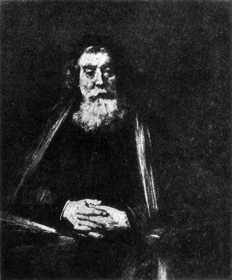
Fig. 32. REMBRANDT: AN OLD MAN (c. 1658).
Florence, Pallazzo Pitti.
Later still is one of Rembrandt's most famous works [Plates 95, 96], the last of the corporation pictures painted by him and representing the Syndics of the cloth workers' guild at Amsterdam, presiding over an ideal assembly. Rembrandt has here returned to the formal method of composition, exemplified in the first of his corporation pictures, the Anatomy Lesson; and it is indeed impossible to imagine that any of the objections raised against the Night Watch can have been heard from any of the persons here portrayed: but there is nothing here of the timid and primitive stiffness of the early composition, the grasp of character is much more subtle and sympathetic and as regards the warmth and richness of tone, the magic of chiaroscuro and the breadth of handling, a wide gulf separates the two pictures.
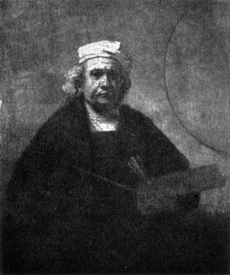
Fig. 33. REMBRANDT: PORTRAIT OF THE ARTIST (c. 1663).
London, Ken Wood, Iveagh Collection.
Among the greatest of the last works of Rembrandt's are some portraits of the artist by himself, of which one, in the Iveagh Collection at Ken Wood (Fig. 33), shows the aged master in his rough and shabby clothes, with the bare wall of his studio in the background, quite otherwise heroic than in many of the dashing self-portraits of his earlier time. And when the works of Rembrandt's last years do not have this character of majestic and self-contained repose, the expression has nevertheless a perfectly elemental power: as witness the amazing portrait of the old Rembrandt laughing [Plate 99], a very late work, dating from about 1665, and now in the Cologne Museum.
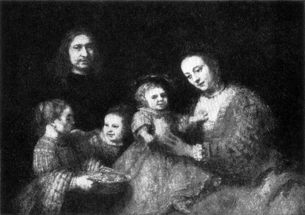
Fig. 34. REMBRANDT: FAMILY GROUP (c. 1668).
Brunswick Gallery.
A very important example among the latest works of Rembrandt is also his Family Group in the Brunswick Gallery (Fig. 34). Though not dated, considerations of style allow us to assign this work to the very end of Rembrandt's life—recent criticism favours as its date 1668, the year before the master's death—and it is indeed astonishing to find Rembrandt at this stage breaking into a colour scheme of utter novelty and boldness, based in the main on a triple chord of different shades of red. The subtlety with which the whole is harmonized goes hand in hand with a freedom, and brilliance of brush work which are unsurpassed in Rembrandt's production and make the picture into a never-ending marvel and delight to the eye.
Finally, to give an example of Rembrandt's compositions of religious subjects dating from the closing stage of his career, in his great picture of the Return of the Prodigal Son [Plates 103, 104], in the Hermitage, painted perhaps in the year of Rembrandt's death, there is something strangely haunting in all these solemn and gigantic upright forms, related to one another, in defiance of every academic rule, in the surrounding twilight; while in the interpretation of the characters and the rendering of the drama, Rembrandt's power of appealing to our most intimate emotions is seen in an unsurpassed degree.
★
In conclusion, I should like to add one more remark of a general character suggested by the art of the great Dutch master. Rembrandt's powers of interpretative sympathy and of poetic imagination are such that it is perhaps no exaggeration to say that to some people a communion with Rembrandt's characters and conceptions has become a kind of religion. That, obviously, is one form of enjoyment: but it surely only takes us to "the point where art begins." And sight should not be lost of the fact that it is because of the way in which the work of Rembrandt can stand the test of strictly artistic form, without any consideration of subject and interpretation, that he can claim to rank as one of the world's greatest artists.
TANCRED BORENIUS
London, June 1942
As will inevitably happen in the case of a great artist, legend has busied itself a good deal about Rembrandt. It is, above all, the eighteenth century which gave currency to many of the fantastic notions about him—including his very name; for at one time he was quite gratuitously christened Paul Rembrandt van Ryn. The nineteenth century, which saw to the unearthing of many unimpeachable records concerning him, did away with numerous errors which had crept in and, moreover, brought to light a long series of neglected or misjudged works by Rembrandt; but it has, perhaps, to some extent ended by presenting rather an idealized picture of his personality. Despite some errors of fact, the earliest existing lives of Rembrandt contain a number of data, which anyone seriously interested in him will do well to bear in mind, just as the total picture which they give of him is of decided value.
None of the three principal early lives of Rembrandt has hitherto been available in English. It has therefore been thought that the translations of them, which follow, will be of some considerable interest. In chronological order, the lives in question are the one, in German, by Joachim von Sandrart, published in 1675, only six years after Rembrandt's death; the one in Italian, by Filippo Baldinucci, which appeared in 1686; and the one in Dutch by Arnold Houbraken, which dates from 1718. Apart from these, there exist references to Rembrandt of varying length in books by several early authors—notably the painters Samuel van Hoogstraten (1678) and Gerard de Lairesse (1714); but although the facts stated by these writers are of great interest—Samuel van Hoogstraten was indeed a pupil of Rembrandt's—they either did not produce an actual life of the master or the biography is too slight to warrant reproduction here.
It is a notable fact that each of the three lives with which we are concerned is either written by an artist or based on information supplied by an artist.
Joachim von Sandrart (1606-88), a native of Frankfort, was a painter who studied in Utrecht under that same Gerard van Honthorst, certain of whose tendencies Rembrandt's art so clearly reflects. Sandrart afterwards spent several years in Italy, before settling in Germany, whence he re-visited Holland. Born in the same year as Rembrandt and having been in personal touch with the latter at Amsterdam about 1637-42, his information about Rembrandt deserves every attention: unfortunately, his style of writing is so involved that his meaning at times is difficult to follow (if he knew it himself). In any case and whatever the prejudices which he absorbed in the course of his career, he does not by any means write of Rembrandt as a wholly unsympathetic observer.
Filippo Baldinucci (who died in 1696) was himself no artist. A Florentine ecclesiastic, of considerable taste and great learning, he compiled voluminous collections of artists' lives, to this day possessing great value; and his life of Rembrandt is, as he himself states, based on information supplied to him by the Danish painter Behardt Keil (1625-87), who for eight years (about 1648-87) had been a pupil of Rembrandt's at Amsterdam before settling in Italy. Attention has lately centred on the work of this artist, who was known in Italy as "Monsù Bernardo": his ultimate indebtedness to Rembrandt is clearly evident in the works of his Italian period, not a few of which have now been identified. Despite some egregious errors, Baldinucci's life possesses real importance through the vivid light which it throws on Rembrandt's personality, suggesting first-hand, if somewhat garbled, evidence.
Arnold Houbraken (1680-1719), finally, was quite a prolific painter and engraver, as an artist certainly not in the first rank, but at the same time unquestionably possessing skill and experience. His life of Rembrandt, though odd in its proportions, brings us, somehow, extremely close to the artist through handing on anecdotal tradition in Holland very freely: the number of actual mis-statements is very small, though amongst them is the erroneous indication of 1674 as the date of Rembrandt's death—a date which was not finally corrected until the nineteenth century.
(in Teutsche Academie der Edlen Bau-Bild- und Mahlerey-Kunste. Vol. I. Nuremberg, 1675).
It is almost to be wondered at that the excellent Rembrand von Ryn, springing as he did merely from the flat land and a miller, yet by nature was driven towards noble art in such a fashion that he reached so high a summit of art through great industry as well as native inclination and bent. He began at Amsterdam under the celebrated Lassman (sic), and, thanks to his natural gifts, unsparing industry and continuous practice, he lacked nothing but that he had not visited Italy and other places where the Antique and the Theory of Art may be studied: a defect all the more serious since he could but poorly read Netherlandish and hence profit but little from books.[1] In consequence, he remained ever faithful to the convention adopted by him, and did not hesitate to oppose and contradict our rules of art—such as anatomy and the proportions of the human body—perspective and the usefulness of classical statues, Raphael's drawing and judicious pictorial disposition, and the academies which are so particularly necessary for our profession. In doing so, he alleged that one should be guided only by Nature and by no other rules; and accordingly, as circumstances demanded, he approved in a picture light and shade and the outlines of objects, even if in contradiction with the simple fact of the horizon, as long as in his opinion they were successful and apposite. Hence, because the clean outlines had to be found in their true place, he, in order to avoid the danger, filled them in with pitch-black in such a fashion that he asked of them nothing but the keeping together of the universal harmony. As regards this latter, he was excellent and knew not only how to depict the simplicity of nature accurately, but also to adorn it with natural vigour in painting and powerful emphasis, notably in half-length pictures or in heads of old people—say, in little pieces, elegant dresses and other pleasant knick-knacks.
Alongside of this, he has etched on copper plates very many and various things, which are published by him in print. From all of which it may be seen that he was a very hard-working, indefatigable man; wherefore good fortune handed him large means in cash and filled his house in Amsterdam with almost innumerable young people of good families, who came there for instruction and tuition. Each of these paid him annually 100 florins; and to this we must add the profit which he made out of the pictures and engravings of these pupils of his—amounting to some 2,000 to 2,500 florins each[2]—and his earnings from his own handiwork. Certain it is that if he had been able to keep in with people, and look after his affairs properly, he would have increased his wealth considerably. For, although he was not a spendthrift, he did not know in the least how to keep his station, and always associated with the lower orders, whereby he also was hampered in his work.
This redounds to his praise, that he knew very intelligently and artistically how to break and imitate the colours in conformity with their individual character so that in the picture the true and vivid simplicity was depicted in the full harmony of life. In so doing he has opened the eyes of all those who, by following the common practice, are more dyers than painters, placing the hardness and coarseness of the colours quite brazenly and insensitively next to one another, so that they have absolutely nothing in common with nature, but resemble the colour boxes you see in shops or the cloths brought from the dyers. For the rest, he was also a great lover of art in its various forms, such as pictures, drawings, engravings and all sorts of foreign curiosities, of which he possessed a great number, displaying a great keenness about such matters. This was the reason why many people thought very highly of him and praised him.
In his works our artist introduced little light, except on the spot which he had chiefly in view; around this he kept light and shade together artistically. He also made well-considered use of reflections by which light penetrates shade very judiciously; his colour was powerfully glowing and in everything he showed consummate judgment. In depicting old people and their skin and hair he gave proof of great industry, patience and experience, so that he approached ordinary life very closely. He has, however, painted few subjects from classical poetry, allegories or striking historical scenes, but mostly subjects that are ordinary and without special significance, subjects that pleased him and were schilderachtig, as the people of the Low Countries say (paintable), and at the same time are full of charm, sought out in nature. He died in Amsterdam and is survived by a son who also is supposed to have good judgment of art.[3]
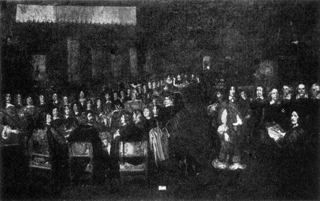
Fig. 35. JOACHIM VON SANDRART: CELEBRATION OF THE PEACE OF MUNSTER (1650).
Nuremberg, Germanisches Museum.
|
This is romantic exaggeration; Rembrandt was a man of considerable culture. |
|
Some notes which Rembrandt in 1635 made on the reverse of a drawing in the Berlin Print Room confirm that he sold his pupils' works, though the figures he mentions are very modest. |
|
This is a mistake: Titus predeceased Rembrandt, dying in 1668. |
(in Cominciamento e progresso dell 'arte d'intagliare in rame colla vita de' piu eccellenti maestri della stessa professione. Florence, 1686).
About the year 1640 there lived and worked in Amsterdam Reimbrond Vainrein, whom in our tongue we call Rembrante del Reno, born in Leyden: a painter, in truth, of much greater prestige than real greatness. He painted a large canvas, which was housed in the residence of the foreign Cavaliers and in which he portrayed a detachment of one of the Burgher Companies which existed over there [Plate 33]. This brought him such fame as was scarcely ever achieved by any other painter in those parts. The reason for this, more than any other, was that among the figures he had represented one with his foot raised in the act of marching and holding in his hand a halberd so well drawn in perspective that, though upon the picture surface it is no longer than half a yard, it yet appeared to every one to be seen in its full length. The remainder, however, turned out so jumbled and confused to such an extent, that the other figures could scarcely be distinguished from one another, in spite of their being all closely studied from life. For this picture, which luckily for him his contemporaries greatly admired, he was paid 4,000 scudi Dutch money, which corresponds to about 3,500 of our Tuscan currency.[4] In the house of a merchant who was a magistrate of Amsterdam he painted in oils on the wall many pictures of stories of Ovid.[5] In Italy, judging solely from what has come to our knowledge, there are two pictures by him: one, in Rome in the Gallery of Prince Pamfili, the head of a man with a slight beard and wearing a turban[6]; the other in Florence, in the Royal Gallery, in the room of the portraits of painters—his own portrait (Fig. 36).[7] This artist professed in those days the religion of the Menisti, which, though false too, is yet opposed to that of Calvin, inasmuch as they do not practise the rite of baptism before the age of thirty.[8] They do not elect educated preachers, but employ for such posts men of humble condition as long as they are esteemed by them honourable and just people, and for the rest they live following their caprice.
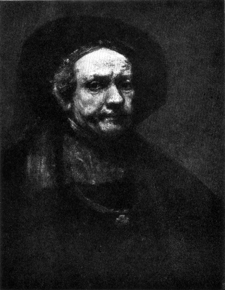
Fig. 36. REMBRANDT: PORTRAIT OF THE ARTIST (c. 1664).
Florence, Uffizi.
One of the first pictures to acquaint Italy with Rembrandt's work as a painter.
This painter, different in his mental make-up from other people as regards self-control, was also most extravagant in his style of painting and evolved for himself a manner which may be called entirely his own, that is, without contour or limitation by means of inner and outer lines, but entirely consisting of violent and repeated strokes, with great strength of darks after his own fashion, but without any profound darks. And that which is almost impossible to understand is this: how ever he, painting by means of these strokes, worked so slowly, and completed his things with a tardiness and toil never equalled by anybody. He could have painted a great quantity of portraits, owing to the great prestige which in those parts had been gained by his colouring, to which his drawing did not, however, come up; but after it had become commonly known that whoever wanted to be portrayed by him had to sit to him for some two or three months, there were few who came forward.[9] The cause of this slowness was that, immediately after the first work had dried, he took it up again, repainting it with great and small strokes, so that at times the pigment in a given place was raised more than half the thickness of a finger. Hence it may be said of him that he always toiled without rest, painted much and completed very few pictures. Nevertheless, he always managed to retain such an esteem that a drawing by him, in which little or nothing could be seen, was sold by auction for 30 scudi, as is told by Bernardo Keillh of Denmark, the much-praised painter now working in Rome. This extravagance of manner was entirely on a par in Rembrandt with his mode of living, since he was a most temperamental man and despised everyone. The ugly and plebeian face by which he was ill-favoured, was accompanied by untidy and dirty clothes, since it was his custom, when working, to wipe his brushes on himself, and to do other things of a similar nature. When he worked he would not have granted an audience to the first monarch in the world, who would have had to return and return again until he had found him no longer engaged upon that work. He often went to public sales by auction; and here he acquired clothes that were old-fashioned and disused as long as they struck him as bizarre and picturesque, and those, even though at times they were downright dirty, he hung on the walls of his studio among the beautiful curiosities which he also took pleasure in possessing, such as every kind of old and modern arms—arrows, halberds, daggers, sabres, knives and so on—and innumerable quantities of exquisite drawings, engravings and medals, and every other thing which he thought a painter might ever need. He deserves great praise for a certain goodness of his, extravagant though it be, namely, that, for the sake of the great esteem in which he held his art, whenever things to do with it were offered for sale by auction, and notably paintings and drawings by great men of those parts, he bid so high at the outset that no one else came forward to bid; and he said that he did this in order to emphasize the prestige of his profession. He was also very generous in lending those paraphernalia of his to any other painter who might have needed them for some work of his.
Wherein this artist truly distinguished himself was in a certain most bizarre manner, which he invented for etching on copper plates. This manner too was entirely his own, neither used again by others nor seen again; with certain scratches of varying strength and irregular and isolated strokes, a deep chiaroscuro of great strength nevertheless springing forth out of the whole. And truth to tell, in this particular branch of engraving Rembrandt was much more highly esteemed by the professors of art than in painting, in which it seems he had exceptional luck rather than merit. In his engravings he used mostly to note, in badly formed, shapeless and tortuous letters, the word Rembrand.[10] Thanks to these engravings of his he achieved great riches, and proportionately with these there arose in him such pride and self-conceit that, since it seemed to him that his prints did not sell at the prices which they deserved, he imagined that he had found a method of increasing the desire for them universally. Hence at intolerable expense he had them bought back all over Europe, wherever he could find them, at any price. Among others he bought one for 50 scudi at a sale by auction in Amsterdam, which was a Raising of Lazarus and this he did while himself possessing the copperplate engraved by his own hand. Eventually, as a result of this wonderful idea, he spent his substance to such an extent that he was reduced to extremities; and something happened to him which is seldom told about other painters, namely, that he went bankrupt. Thereafter he left Amsterdam and entered the service of the King of Sweden, where he died miserably about the year 1670.[11] This is what we have been able to learn about this artist from someone who at that time knew him and saw a great deal of him.[12] Whether he persisted in that false religion of his we have not ascertained. There remained some who had been his pupils, that is to say, Bernardo Keillh of Denmark, mentioned above, and Guobert Flynk of Amsterdam[13]; and the latter in his colouring followed the manner of the master, but outlined his figures much better. Lastly, among his pupils there was the painter Gerardo Dou of Leyden.[14]

Fig. 37. BERNHARDT KEIL; SLEEPING GIRL (c. 1660).
Detroit Institute of Arts.
A typical work by the pupil of Rembrandt who supplied information about his master to Baldinucci.
|
The picture referred to is, of course, The Night Watch; and the figure singled out for praise is that of the lieutenant, Willem van Ruytenburg. The sum which Rembrandt was paid for the picture is greatly exaggerated; it was in reality 1,600 florins. |
|
These paintings no longer survive; cf. H. d. G. 216. They are sure not to have been painted in oil direct on the wall: here speaks the Italian accustomed to frescoes. |
|
This picture cannot now be traced. A bust of a shepherd in the Doria Gallery in Rome (No. 296), although bearing the signature of Rembrandt and the date 1645, cannot be accepted as genuine. It is doubtless a different picture from the one mentioned by Baldinucci. |
|
In the collection of self-portraits in Uffizi there are now two self-portraits by Rembrandt (H. d. G. 539, 540). It has been suggested that these were acquired as a result of the visit which Cosimo de' Medici (later the Grand Duke Cosimo III of Tuscany) paid to the studio of Rembrandt on December 29th, 1667. The pictures painted by Rembrandt for Antonio Ruffo of Messina (see above, p. 14) were unknown to Baldinucci. |
|
There is some documentary evidence in support of the statement that Rembrandt belonged to the sect of the "Menisti" (Mennonites). |
|
The large number of extant pictures by Rembrandt conflicts with the allegations here made to the effect that he might have painted much more. |
|
As regards Rembrandt's handwriting, it may be noted that as far back as the seventeenth century the misreading of one word—geretuckt, geretuckert, geretuck—i.e. retouched, upon certain etchings dated 1634 or produced about that time (H. 131, 132, 133) gave rise to the utterly groundless view that Rembrandt was in Venice in 1635, the word having been interpreted as "Venetiis." |
|
Nothing is known from any other source about a journey of Rembrandt's to Sweden, a country, for that matter, visited by several Dutch painters about this time. It is tempting to look for some connection between the story of Rembrandt's having gone to Sweden and the emergence of the great Conspiracy of the Batavians (Plate 94) in that country during the eighteenth century; but here we enter the field of pure and fanciful conjecture. Many records prove the presence of Rembrandt at Amsterdam towards the end of his life; the accurate date of his death was October 4th, 1669. |
|
The person referred to is Bernhardt Keil. |
|
Govaert Flinck (1615-60). |
|
Gerard Dou (1613-75). |
(in Groote Schouburgh der Nederlantsche Konstschilders en Schilderessen. Vol. I. Amsterdam, 1718).
The year 1606, so prolific in producing good artists, caused also, on July 15th, Rembrandt to be born on the Rhine near Leyden.
His father was called Herman Gerritzen van Ryn, and was a miller at the corn-mill between Leyendorp and Koukerk, on the Rhine.[15] His mother's name was Neeltje Willems van Zuitbroek, and both parents earned their livelihood honestly through their work.
Our Rembrandt was an only son,[16] and his parents were anxious that he should learn Latin and become a learned man, so they sent him to school at Leyden. But his particular inclination towards drawing caused them to alter their decision; and as a result they sent him, in order to acquire the elements of art, to Jakob Izakzen van Zwanenborg, with whom he spent some three years, in which time he made such progress that every one was amazed and thought that something important could be expected from him. For this reason his father, in order that he should lack no opportunity of laying a firm basis for his art, decided to bring him to P. Lastman at Amsterdam. He stayed with the latter six months, after which he spent some months with Jak. Pinas. Thereupon he determined to continue on his own, and from the very beginning he was marvellously successful in this. Others maintain that Pinas was his first teacher,[17] and Simon van Leeuwen says in his Short Description of Leyden that Joris van Schoten was the teacher of Rembrandt and Jan Lievensz.[18]
While he thereupon eagerly and with great enthusiasm daily went on with his art by himself in the house of his parents, he was occasionally visited by lovers of art, who eventually indicated to him a gentleman in the Hague to whom he should show and offer a picture which he had just finished. Rembrandt went with it on foot to the Hague and sold it for 100 florins. He, tremendously pleased and not used to having so much money in his purse, wanted to get home as quickly as possible so that his parents should share in the pleasure it brought to himself.
To go on foot was too undignified, to travel by barge too common, therefore he boarded the open cart which travelled to Leyden.
When they changed horses at the Huis den Deil and every traveller left the cart to take refreshment, only Rembrandt stayed on in the cart with his spoil, not trusting it left alone. What happens? The nose-bag just removed, while the waggoner and his man in readiness came along, the horses bolted and ran on with him, without taking notice of the reins, until within the gates of Leyden, and stopped with the cart in front of their usual inn, at which every one wondered, asking him how it happened. To which he gave little answer, but disappeared from the cart, with his spoil, to his parents, well pleased that he thus, gratis and for nothing, speedier than in any other fashion, should have been brought to Leyden.
This brilliant beginning showed him the possibility of earning money, and his enthusiasm was spurred on in consequence, so that he gained the satisfaction of all connoisseurs. Thus he got (as the proverb says) the hands full of work. And as he later frequently was obliged to go to Amsterdam, in order to paint both portraits and other pictures, he found it advisable—since this city seemed to him particularly favourable to him and presaged his success—to settle there. This was about the year 1630.[19]
There commissions flowed to him from all quarters, as also a crowd of pupils, for whom he rented a warehouse on the Bloemgracht, in which he gave each a room for himself, often divided from that of others only by paper or canvas, so that every one, without disturbing anyone else, could draw from life.[20] Since young people, especially if there are many of them together, will sometimes get into mischief, so it happened also here. As one of them needed a female model, he took her into his room. This aroused the curiosity of the others, who, in order not to be heard, in their socks, one after the other, looked on through a chink in the wall made on purpose. Now it happened, on a warm summer's day, that both the painter and the model stripped so as to be stark naked. The merry jokes and words which passed between the two could easily be retold by the spectators of this comedy. About the same time there arrived Rembrandt to see what his pupils were doing and, as was his custom, to teach one after the other; and so he came to the room where the two naked ones were sitting next to one another. He found the doors closed, but, told about the thing, he watched for a while their pranks through the chink that had been made, until among other words he also heard, "Now we are exactly as Adam and Eve in Paradise, for we are also naked." On this he knocked at the door with his mahlstick and called out, to the terror of both, "But because you are naked you must get out of Paradise." Having forced his pupil by threats to open the door, he entered, spoilt the Adam and Eve play, transformed comedy into tragedy, and drove away with blows the pretended Adam with his Eve, so that they were only just able, when running down the stairs, to put on part of their clothes, in order not to arrive naked in the street.
As an artist he was prolific in ideas, and that is why one often sees by him a large number of different sketches of one and the same subject; and he was also inexhaustible, be it in regard to facial features and attitudes or in regard to costume. In this respect he may be praised above all others, but especially with regard to those who always introduce into their pictures the same faces and costumes, as if all men were twins. Indeed in this respect he surpassed all others, and I know nobody who has varied his sketches of one and the same subject in so manifold a fashion. This is a result of close observation of the various emotions, which were the cause of a definite event, and may be recognised in the facial features of people, notably through a particular expression or through the most varied movements of the body. For instance, lovers of drawing are acquainted with several different sketches (apart from the two prints) of the scene when Christ through breaking the bread makes Himself known to the two disciples who had gone with Him to Emmaus. No smaller is the number which exists of sketches of the two disciples amazed and astounded as Christ has vanished before their eyes. We have ourselves, as a guidance for still unexperienced young painters, engraved and shown herewith one such sketch which pleased us most by reason of the excellent expression of astonishment and the speechless staring at the empty chair on which Christ still was sitting a moment before He disappeared (Figs. 38 and 39). . . .[21]
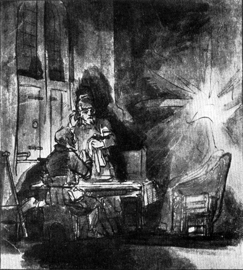
Fig. 38. REMBRANDT: THE SUPPER AT EMMAUS.
Drawing formerly in the collection of Mr. Charles Ricketts and Mr. Charles Shannon, London.
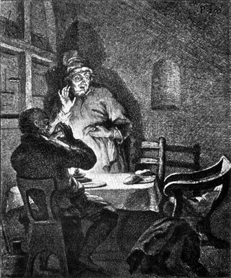
Fig. 39. ARNOLD HOUBRAKEN AFTER REMBRANDT: THE SUPPER AT EMMAUS.
Etching (1718).
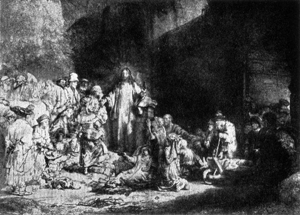
Fig. 40. REMBRANDT: THE HUNDRED GUILDER PRINT (1649).
H.236.
But it is to be regretted that, with such a bent towards alterations or easily driven towards something else, he should have but half carried out many of his pictures, and even more of his etchings, so that only the completed ones can give us an idea of all the beauty that we would possess from his hand if he had finished everything the way he had begun it. This is in particular to be seen from the Hundred Guilder Print (Fig. 40), whose treatment we can only wonder at, because we fail to understand how he was able to carry this out on the basis of a first rough sketch. Nevertheless, this method of his may be seen from the Portrait of Lutma (Fig. 41), which exists in print first as a rough sketch, then with a background, and finally quite completed.[22] In an exactly similar fashion he treated his pictures, of which I have seen some in which some details are executed with the utmost care while the rest was daubed over as with a rough house-painter's brush, without any regard to the drawing. But he was not to be kept back from doing this, and said in his justification that a picture is completed when the master has achieved his intention by it; nay, he went so far in this respect that he, in order to give full effect to one single pearl, daubed over a beautiful Cleopatra. I remember in this connection an example of his whimsicalness. One day he was working on a great portrait group, in which man and wife and children were to be seen. When he had half completed it, his monkey happened to die. As he had no other canvas available at the moment, he portrayed the dead ape in the aforesaid picture. Naturally the people concerned would not tolerate that the disgusting dead ape appeared alongside of them in the picture. But no: he so adored the model offered by the dead ape that he would rather keep the unfinished picture than obliterate the ape in order to please the people portrayed by him. The picture in question subsequently for a long time served as a dividing wall for his pupils.[23]

Fig. 41. REMBRANDT: JAN LUTMA THE ELDER (1656).
Third state of etching (H.290) showing elaborate background.
Nevertheless there are many pictures from his hand which, carefully carried out and completed, may be seen in the principal cabinets, though some years ago many of them, bought up at large prices, were exported to Italy and France.[24]
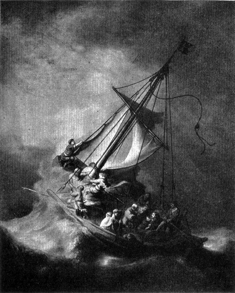
Fig. 42. REMBRANDT: THE STORM ON THE SEA OF GALILEE (1633).
Boston, Isabella Stewart Gardner Museum.
And I have noticed that in his youth he had much more patience to execute his pictures carefully than later. This is particularly noticeable in a picture which is known under the name of St. Peter's Boat (Fig. 42), which long hung in the cabinet of the late Alderman and Burgomaster Jan Jakobzen Hinloopen at Amsterdam. The attitudes of the figures and their features are expressed as much in conformity with the event as can be imagined, and at the same time the whole is executed much more carefully than one is accustomed to see anything done by him.[25] In the same collection is yet another picture by Rembrandt, Haman, Esther and Ahasuerus at Table, which the poet Jan Vos, an intelligent connoisseur, has described—together with the strength of the emotions expressed in it—as follows:—
"Here one sees Haman eating with Ahasuerus and Esther,
But it is in vain, his breast is full of grief and pain.
He bites at Esther's food: but deeper into her heart.
The King is possessed by revenge and rage,
The wrath of a king is shocking as it raves.
Threatening all men, it is nullified by a woman.
So falls one from the summit into the chasm of adversity.
The vengeance which comes slow has the strongest rods."[26]
Similarly treated is also the picture called The Woman taken in Adultery [Plate 42], belonging to Master Willem Six, senior Alderman of the City of Amsterdam[27]; as also the picture of the Sermon of St. John the Baptist [Plate 16], a grisaille, amazing in the natural rendering of the faces of the listeners and the various costumes: it belongs to the Postmaster Johan Six in Amsterdam.[28] I must also for this reason assume with certainty that he attached importance to these circumstances and did not trouble much about the rest. I am all the more sure of this as many of his pupils told me that he at times sketched a face in ten different ways before he brought it on the canvas, or else might spend a whole day or two in placing a turban according to his taste. With the nude model he did not make so many preparations, but treated it for the most part only hastily. A good hand by him one sees but seldom, because he hid the hands, notably in his portraits, in the shadow; or he painted simply the hand of any old wrinkled woman.
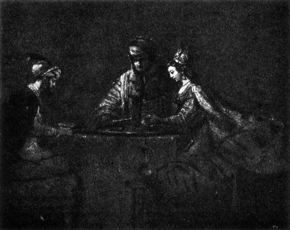
Fig. 43. REMBRANDT: HAMAN, ESTHER AND AHASUERUS AT TABLE (1660).
Formerly Moscow, Rumianzov Museum.
His nude women, however, the most wonderful subject of the brush, upon which all celebrated masters from time immemorial spent all their industry, are (as the saying goes) too pitiful for one to make a song about. For these are invariably figures before which one feels repugnance, so that one can only wonder that a man of such talent and spirit was so self-willed in the choice of his models. . . .
[Karel van Mander] tells that Michelangelo [da Caravaggio] used to say that every picture, whatever it was, and whoever by, was only a childish and trifling affair if everything was not painted from Nature: there was nothing that could be preferred to following Nature. Hence he never did a single stroke without having the living model before him. Of the same opinion was also our great master Rembrandt, who laid down the principle that one should only follow Nature and that everything else was worthless to him. . . .
Rembrandt would not be bound by any rules made by others and not even follow the exalted examples of those who through their rendering of beauty had prepared for themselves eternal fame: he contented himself with imitating Nature, as it appeared to him, without being fastidious. Hence the good poet Andries Pels very perspicaciously remarks on him in his poem Use and Misuse of the Theatre (p. 36) that
"If he painted, as sometimes would happen, a nude woman,
He chose no Greek Venus as his model,
But rather a washerwoman or a treader of peat from a barn,
And called his whim 'imitation of nature.'
Everything else was to him idle ornament. Flabby breasts,
Ill-shaped hands, nay, the traces of the lacings
Of the corselets on the stomach, of the garters on the legs,
Must be visible, if Nature was to get her due:
That is his Nature, which would stand no rules,
No principles of proportion in the human body."
I praise this candour in Pels and ask the reader also to put the best possible interpretation on my frank judgment, since it is not expressed from any hatred of the man's works, but in order to compare with one another the different opinions and the varying artistic points of view and to spur the aspiring artist to imitation of that which is most worthy of fame. For apart from this, I must say with the poet mentioned before:
"What a loss it was for art that such a master hand
Did not use its native strength to better purpose.
Who surpassed him in the matter of painting?
But oh! the greater the talent, the more numerous the aberrations
When it attaches itself to no principle, no rules,
But imagines it knows everything of itself."
For the rest, his works were at the time so highly valued and so much sought after that, as the saying goes, you had to beg of him as well as pay him. For years he was so overwhelmed with orders that people had to wait long for their pictures, although, especially in the last years of his life, he worked so fast that his pictures, when examined from close by, looked like having been daubed with a bricklayer's trowel. For that reason visitors to his studio who wanted to look at his works closely were frightened away by his saying, "The smell of the colours will bother you." It is said that he once painted a picture in which the colours were so heavily loaded that you could lift it from the floor by the nose. You see also stones and pearls, in necklaces and turbans, painted with an impasto so thick as if they were chiselled; and through this manner of painting his pictures have a powerful effect even when seen from a long distance.
Of the great number of excellent portraits, there was his self-portrait belonging to M. Jan van Beuningen, carried out so artistically and vigorously that the most brilliant pictures by Van Dyck or Rubens could not rival it. Indeed, the head seemed to issue forth from the picture and address the spectator.[29] No less praise is given, on account of its strength, to the self-portrait in the gallery of the Grand Duke in Florence,[30] hanging alongside of those by F. Koning, E. Mieris, G. Dou, B. van der Helst, Ferdinandus Voet of Antwerp, M. Musscher, G. Schalken, G. Laires, A. van der Werf, K. de Moor and Van der Neer.
Of his paintings we think, however, that we have said enough. We want (although his biography already has been inordinately lengthened) yet to speak of his naturalistic and inimitable etchings, which by themselves would have sufficed to preserve his fame. Amateurs of engraving know some hundreds of them, as also a not inferior number of pen-drawings on paper, in which the emotions called forth by various events have been expressed by him so skilfully and clearly in the features that it is amazing. Anger, hatred, sorrow, joy and so on are represented so naturally that one can read from the strokes of the pen what each signifies. Among many, one of the most excellent is the rendering of the Last Supper of Christ, which I have seen in the possession of the lover of art van der Schelling, and which now belongs to M. Willem Six, frequently mentioned by us, and is valued at more than 20 ducats, though it is but a mere pen-and-paper sketch. You may see from it that in observing the most various emotions, he was able to absorb a permanent conception of them.[31]
Many witty subjects, figures, portraits and a great number of male and female heads have been etched by him on copper merely with the needle—some of them very carefully—and diffused in print to the delectation of amateurs.
He had also a method all his own of gradually treating and finishing his etched plates, a method which he did not communicate to his pupils; and it is not to be ascertained how they were done. Thus the invention (like the method of staining glass the way Dirk and Wouter Crabet, of Gouda, did it) has been buried with the inventor.
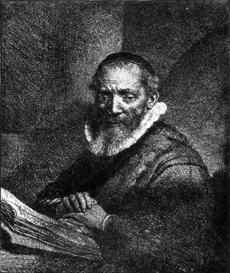
Fig. 44 REMBRANDT: JAN CORNELIS SYLVIUS (?) (1639).
Etching (H. 111).
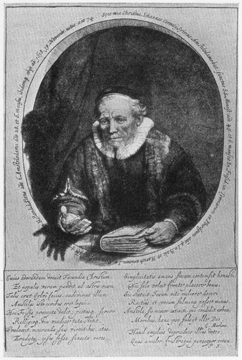
Fig. 45. REMBRANDT JAN CORNELIS SYLVIUS (1646).
Second state of etching (H. 225).
To give an instance: of the Portrait of Lutma (Fig. 41) three different impressions are known—one roughly sketched, another somewhat more finished, in which the window-frame is visible, and finally one which is completed with great care and vigour.[32] One discovers also, as regards the Portrait of Sylvius (Figs. 44 and 45), that, similarly, it is first roughly etched, and that the tender sparkling shadows and vigorous touches are then brought in, and so well and delicately treated as may be achieved in mezzotint.[33] These works brought him great fame and no small advantage, and in particular through the device of slight changes of small and unimportant additions, which he made on his prints, thanks to which these could be sold again as fresh ones. Nay, the demand was at that time so great that people were not considered as true amateurs who did not possess the Juno with and without the crown (Fig. 46)[34], the Joseph with the light and the dark head (Fig. 47)[35] and so on. Indeed, every one wanted to have The Woman by the Stove (Fig. 48)—for that matter one of his least important etchings[36]—both with and without the stove-key, in spite of the fact that he sold the etching through his son Titus, as if it were too unimportant for himself.
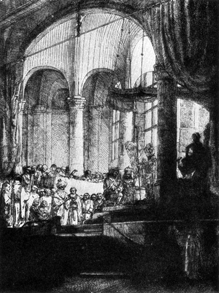
Fig. 46. REMBRANDT: MEDEA, OR THE MARRIAGE OF JASON AND CREUSA (1648).
First state of etching (H. 235) showing statue of Juno without a crown.
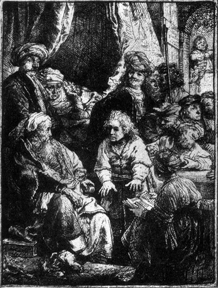
Fig. 47. REMBRANDT: JOSEPH TELLING HIS DREAMS (1638).
First state of etching (H. 160) before curtain and heads in the background were covered with shading.
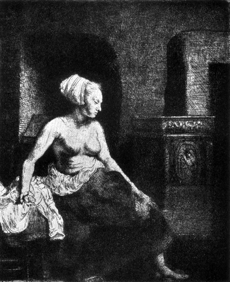
Fig. 48. REMBRANDT: WOMAN SITTING HALF-DRESSED BESIDE A STOVE (1658).
Third state of etching (H. 296) before the introduction of the stove-key.
Besides, he had so great a number of pupils, of whom each brought him annually 100 florins, that Sandraert, who used to have personal contact with him, says that he could calculate that Rembrandt from his pupils had an annual income of more than 2,500 florins. Yet such was his love of money (I will not say craving for money) that his pupils, who noticed this, often for fun would paint on the floor or elsewhere, where he was bound to pass, pennies, two-penny pieces and shillings, and so on, after which he frequently stretched out his hand in vain, without letting anything be noticed as he was embarrassed through his mistake.
"Money stops no desire."
Add to this what he gained with his brush, because he made people pay well for his painting. He must thus necessarily have earned large sums of money, all the more so as he spent little at taverns or parties and still less at home, where he lived but simply, often content with some bread and cheese or a pickled herring as his whole meal. Nevertheless, one heard nothing trumpeted about a large estate at the time of his death, which occurred in 1674.[37]
His wife was a peasant woman from Raarep, or Ransdorp, in the district of Waterland, small in figure, but well shaped of face and plump of body. Her portrait my be seen next to his own in one of his prints. . . .[38]
In the autumn of his life he kept company mostly with common people and such as practised art. Perhaps he knew the laws of the art of living as set out by Gratian, who says, "It is a good thing to frequent distinguished persons in order to become one yourself; but once that is achieved you should mix with ordinary people." And he gave this reason for it: "If I want to give my mind diversion, then it is not honour I seek, but freedom."
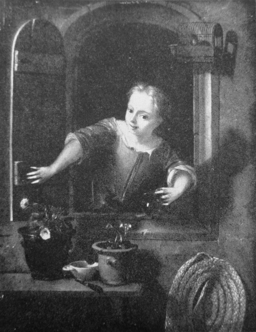
Fig. 49. ARNOLD HOUBRAKEN: GIRL AT A WINDOW WATERING FLOWERS.
London, Messrs. Duits.
Characteristic example of the art of Rembrandt's most substantial early biographer.
|
There is here a topographical inaccuracy regarding the mill which we need not pursue. Rembrandt was, as a matter of fact, born in his parental house at Leyden. |
|
Rembrandt was the last but one of seven children; he had four brothers (Adriaen, a cobbler, Gerrit, Cornelis, Willem, a baker) and two sisters (Machteld and Lysbeth, the last-mentioned his junior and frequently portrayed by him in his early years). |
|
There were two brothers Pynas, or Pinas, Jacob and Jan. The latter (1583/84-1631) was really the more important of the two and ranks as one of the most notable of those Dutch painters of his time who were influenced by the art of Italy (which he visited) and Elsheimer. His works show many anticipations of the style of Rembrandt, who owned two pictures by him. In another connection Houbraken says that Jan Pynas painted in a brown tonality and that hence many people think that Rembrandt imitated him in this respect; yet in his life of Rembrandt the same writer states that it was Jacob Pynas who taught Rembrandt. Jacob, who was possibly the younger brother, was (like Jan) in Italy in 1605; there exist a number of pictures and drawings by him, the latest date occurring on any known work by him (a drawing of Christ on His Way to Emmaus in the Berlin Print Room) being 1650. |
|
The reference of Simon van Leeuwen (1672) to Joris van Schooten (1587-1651) as Rembrandt's teacher is nowadays regarded as due to a confusion with Jacob van Swanenburgh. |
|
Rembrandt settled at Amsterdam in 1632. |
|
The presence of these screens in Rembrandt's own house (in the St. Anthonie Breestraat) is confirmed by records of 1658-59 relating to the sale of the property. |
|
A drawing of this character was in the collection of Mr. Ricketts and Mr. Shannon (Vasari Society, II Series, Pt. I, No. 7) (Fig. 38). |
|
See below, p. 27. |
|
This picture, which must have been of immense interest—showing Rembrandt in a kind of sur-réaliste mood—has, alas! probably long since perished. |
|
During his lifetime Rembrandt was certainly not unknown in Italy. We may refer to the Antonio Ruffo episode, set out at length above, p. 14; and it may also be mentioned that on December 29th, 1667, Rembrandt was visited in his studio at Amsterdam by Cosimo de' Medici (the subsequent Grand Duke Cosimo III), who was making a grand tour of Europe. In 1641 a picture by Rembrandt (The Angel and Balaam, probably the picture now in the Musée Cognacq-Jay in Paris, H. d. G. 26), was in the collection of Alfonso Lopez in Paris. So much for Italy and France. As to England, it should be borne in mind that Charles I (whose activities as a collector were ended by the early 1640's) owned no fewer than five paintings by Rembrandt. One of them, now missing, if correctly called "A Prospect of Greenwich," might supply a piece of evidence in favour of Rembrandt's having visited England—in that case much earlier than the date (c. 1661-62) usually mentioned. This particular record has not been noticed in the discussion of the problem. |
|
This picture (1633) is now in the Isabella Stewart Gardner Museum, Fenway Court, Boston (Fig. 42). |
|
This is probably the picture of 1660 formerly in the Rumianzov Museum at Moscow (Fig. 43). |
|
This is the picture of 1644 now in the National Gallery (Plate 42). |
|
This picture (painted about 1636) is now in the Kaiser Friedrich Museum in Berlin (Plate 16). |
|
The present whereabouts of this picture is, unfortunately, unknown. It was in the Guêrin Sale, The Hague, September 13th, 1740, and in the Tierens Sale, The Hague, July 23rd, 1743 (H. d. G. 590). |
|
See above, p. 22. |
|
This is the drawing now in the Print Room at Berlin (Fig. 6). |
|
This is the etching H. 290 of 1656. |
|
The reference is to one of the two etchings of Jan Cornelis Sylvius—H. 111 or 225. |
|
Houbraken is referring to the etching Medea: or the Marriage of Jason and Creusa (H. 235) of 1648. |
|
The etching in question is Joseph Telling his Dreams (H. 160), of 1638. |
|
This is the superb late etching of 1658 (H. 296). |
|
Should be 1669. |
|
There is here some confusion. Saskia, who is the person portrayed in the etching referred to (Rembrandt and his Wife Saskia: busts, H. 144, dated 1636), was not a peasant girl from the district mentioned. The reference is obviously to Hendrikje Stoffels, who came to be regarded as Rembrandt's wife, although never legally wedded to him. |
The following abbreviations are used in these notes:—
B. (and number) stands for: WILHELM BODE, The Complete Work of Rembrandt &c. 8 vols. Paris, 1896-1906.
H. d. G. (and number) stands for: C. HOFSTEDE DE GROOT, A Catalogue Raisonné of the Works of the Most Eminent Dutch Painters of the Seventeenth Century, vol. vi, sect. xxii (Rembrandt). London, 1916.
K. d. K. stands for: Rembrandt. Des Meisters Gemälde in 643 Abbildungen. ("Klassiker der Kunst," vol. ii.) Third edition by W. R. VALENTINER. Stuttgart and Berlin, 1908.
K. d. K., Supp. stands for: Rembrandt. Wiedergefundene Gemälde (1910-1922). ("Klassiker der Kunst," vol. xxvii.) Second edition by W. R. VALENTINER. Stuttgart, Berlin and Leipzig.
Br. (and number) stands for: Rembrandt Paintings. Ed. by A. BREDIUS. Phaidon Edition, London, 1942.
Lippmann (and number) stands for: Zeichnungen von Rembrandt Harmensz van Rijn, ed. by F. LIPPMANN. Berlin, 1888 sqq.
H. d. G., Handzeichnungen (and number) stands for: C. HOFSTEDE DE GROOT, Die Handzeichnungen Rembrandts. Haarlem, 1906.
Valentiner, Handzeichnungen (and number) stands for: W. R. VALENTINER, Die Handzeichnungen Rembrandts. 3 vols. planned, 2 so far issued (vol. i, 1925, vol. ii, 1928). New York.
In references to Etchings, B. stands for ADAM BARTSCH, Catalogue raisonné de toutes les estampes qui forment l'oeuvre de Rembrandt (Vienna, 1797); and H. for ARTHUR M. HIND: Rembrandt's Etchings (2 vols., London, 1912).
1. REMBRANDT'S MOTHER READING THE BIBLE. Wilton House, Earl of Pembroke.
B. 22. H. d. G. 320. K. d. K., p. 37. Br. 68.
Canvas, 29½ by 24 in.; 74 by 61 cm.
Velvet hood, brownish dress. Signed "Rembrandt P." Painted about 1629.
In the Wilton collection before 1730.
Rembrandt's mother, Neeltgen Willemsdochter van Zuytbrouck, wife of Harmen Gerritsz. van Rijn (1568-1630) was buried September 14, 1640.
2. THE PHILOSOPHER. London, National Gallery.
K. d. K., Supp., p. 8. Br. 427.
Panel, 21½ by 18 in.; 54 by 45 cm.
Scheme of colour practically a greyish golden monochrome. Signed "Rembrandt". Painted about 1630.
Warburton Davies collection; purchased for the National Gallery from Sir Francis Davies, 1917.
3. A SCHOLAR STUDYING ("ST. ANASTASIUS"). Stockholm, National Museum.
B. 40. H. d. G. 186. K. d. K., p. 19. Br. 430.
Panel, 24 by 19 in.; 60 by 48 cm.
The figure in grey-blue cloak, with purple cap. Signed "Rembrandt ft. 1631".
M. D. van Eversdijck sale, The Hague, May 26, 1766; Lucas von Breda, Sweden; Lovisa Ulrika, Queen of Sweden; Gustavus III, King of Sweden.
4. A SCHOLAR IN A ROOM WITH A WINDING STAIR. Paris, Louvre.
B. 122. H. d. G. 233. K. d. K., p. 111. Br. 431.
Panel, 11½ by 13 in.; 29 by 33 cm.
The scholar in brown cloak, red cap. Signed "RHL van Ryn 1633".
Companion piece to a picture of a similar subject, now also in the Louvre; and both paintings have the following history:—
Willem Six sale, Amsterdam, May 12, 1734; Comte de Vence sale, Paris, February 9, 1761; Duc de Choiseul sale, Paris, April 6, 1772; Randon de Boisset sale, Paris, February 27, 1777; Comte de Vaudreuil sale, Paris, November 24, 1784, when the pair was acquired for King Louis XVI.
A drawing (in red chalk) for the principal figure is in the Print Room, Berlin. (Lippmann, 2.)
5. THE ANATOMY LESSON OF PROFESSOR TULP. The Hague, Mauritshuis.
B. 55. H. d. G. 932. K. d. K., p. 69. Br. 403.
Canvas, 65 by 86½ in.; 162.5 by 216.5 cm.
Nicolaes Tulp (1593-1674), a celebrated anatomist and prælector anatomiæ at Amsterdam since 1628, is demonstrating, on the corpse of a man, the anatomy of certain muscles of the arm, to seven masters of the Surgeons' Guild at Amsterdam. Tulp is in black, with white collar and black hat; the listeners are in black, with white ruffs, except the third figure from the left, eagerly bent forward as he follows the demonstration, who is in purple satin. Signed "Rembrandt f. 1632"; the names of the sitters are written on a sheet of paper, held by the figure immediately to the left of Tulp.
The picture was painted for the Anatomical Theatre of the Surgeons' Guild at Amsterdam and remained there until 1828; it was then offered for sale by auction at Amsterdam on August 4, 1828, but acquired before the sale for the collection of William I, King of the Netherlands.
6. PORTRAIT OF THE ARTIST. Berlin, Kaiser Friedrich Museum.
B. 167. H. d. G. 526. Br. 21.
Panel, 22½ by 18 in.; 57 by 46 cm.
Brown cloak with fur collar, black velvet cap; patterned green neck-cloth. Signed "Rembrandt f. 1634".
In the Prussian Royal collections at Sanssouci, Potsdam, by 1764.
7. SASKIA, THE ARTIST'S WIFE. Dresden Gallery.
B. 151. H. d. G. 608. K. d. K., p. 126. Br. 97.
Panel, 21 by 17½ in.; 52.5 by 44.5 cm.
Blue gown, red velvet hat with white ostrich feather. Signed "Rembrandt ft. 1633".
In the Dresden Gallery by 1817.
Saskia van Uylenburch, born in 1613, was married to Rembrandt in 1634 and died on June 14, 1642.
8. SASKIA. Cassel Gallery.
B. 150. H. d. G. 607. K. d. K., p. 127. Br. 101.
Panel, 39 by 30½ in.; 98 by 77 cm.
Deep purplish red robe; pale green under-garment, richly embroidered round the neck; broad-brimmed hat of gold brocade, lined with red velvet; white ostrich feather. A sprig of rosemary in her right hand.
Not signed; painted about 1634.
Remained in Rembrandt's possession until 1652, when it was acquired by Jan Six from the artist.
Jan Six sale, Amsterdam, April 6, 1702; Nicolaes Six collection; Willem Six sale, Amsterdam, May 12, 1734; Valerius de Reuver collection, Delft; acquired by Wilhelm VIII, Landgrave of Hesse-Cassel in 1750, with the collection of Madame de Reuver.
Drawings for this picture are in the Albertina, Vienna (H. d. G., Handzeichnungen, 1431) and in the Hofstede de Groot collection (Valentiner, Handzeichnungen, ii, 674).
9. THE ARTIST WITH HIS WIFE SASKIA. Dresden Gallery.
B. 157. H. d. G. 334. K. d. K., p. 133. Br. 30.
Canvas, 64 by 52 in.; 161 by 131 cm.
Rembrandt's coat, fiery red with full striped sleeves; his hat (the typical "Rembrandt hat"), black with white ostrich feather. The tall glass raised by the artist contains brown beer. Saskia's gown of light blue satin, her bodice dark velvet. Green curtain on the right. Signed "Rembrandt (sic) f."; painted about 1634. Araignon sale, Paris, 1751; shortly afterwards acquired for the Dresden Gallery.
10. PORTRAIT OF MAERTEN DAEY. Paris, Baron Robert de Rothschild.
B. 107. H. d. G. 637. K. d. K., p. 196. Br. 199.
Canvas, 82 by 52 in.; 207 by 132 cm.
The main material of the fashionable costume is black, striped with white. On the right a blue-green drapery. Signed "Rembrandt f. 1634".
The sitter, who died after 1650, was born in 1604 and hence thirty years of age when this portrait was painted, five years after his marriage (1629) to Machteld van Doorn, portrayed, also in 1634, in the companion picture (Plate 11), whose history it has shared as follows:—
Hendrik Daey sale, Alkmaar, 1798; acquired for the Van Winter collection, Amsterdam, from which the two pictures passed by inheritance to the Van Loon family, Amsterdam; the Van Loon collection acquired by the Rothschild family in 1877; Baron Gustave de Rothschild collection, Paris.
This picture and its companion are typical examples of Rembrandt's work as a fashionable portrait painter in Amsterdam in the 1630's.
11. PORTRAIT OF MACHTELD VAN DOORN. Paris, Baron Robert de Rothschild.
B. 108. H. d. G. 638. K. d. K., p. 197. Br. 342.
Canvas, 82 by 52 in.; 207 by 132 cm.
Gown rich black silk, fan with black ostrich feathers. In the background a blue-green drapery. Signed "Rembrandt f. 1634".
The sitter, who died in 1646, was born in 1605 and hence twenty-nine when this portrait was painted.
Companion to the husband's portrait (Plate 10); see the comments on that work.
12. THE DESCENT FROM THE CROSS. Leningrad, Hermitage.
B. 126. H. d. G. 135. K. d. K., p. 164. Br. 551.
Canvas, 63 by 46½ in.; 158 by 117 cm.
The local colours are little accentuated in this twilight scene; but it may be noted that the man in the centre, holding the body of Christ firmly grasped, wears a light yellow coat; and that Joseph of Arimathea, standing in the foreground turning his back to the spectator, has a dark purple robe. Signed "Rembrandt f. 1634".
Valerian de Reuver collection, Amsterdam (see inventory of his widow's effects, 1703); V. de Reuver collection, Delft, 1710; acquired by Wilhelm VIII, Landgrave of Hesse-Cassel in 1750, with the collection of Madame de Reuver; looted by the French at Cassel in 1806 and sent to Malmaison; acquired from the collection of the Empress Josephine at Malmaison in 1813 by Alexander I, Czar of Russia.
A somewhat smaller variant of this composition, signed and dated 1651, is in the collection of Mr. Joseph E. Widener in Philadelphia (H. d. G. 133; Br. 584).
13. THE RAPE OF GANYMEDE. Dresden Gallery.
B. 197. H. d. G. 207. K. d. K., p. 169. Br. 471.
Panel, 68½ by 52 in.; 171.5 by 130 cm.
Ganymede's light blue coat and white shirt pulled up by the eagle; in his left hand he holds some cherries. Signed "Rembrandt ft. 1635".
Anonymous sale, Amsterdam, April 26, 1716; W. van Velthuyzen sale, Rotterdam, April 15, 1751; acquired for the Dresden Gallery later in the year at Hamburg.
A pen-and-ink drawing for this picture is in the Print Room, Dresden (Valentiner, Handzeichnungen, ii, 609).
14. SAMSON THREATENING HIS FATHER-IN-LAW. Berlin, Kaiser Friedrich Museum.
B. 210. H. d. G. 31. K. d. K., p. 171. Br. 499.
Canvas, 62 by 51½ in.; 156 by 129 cm.
Samson's coat, green shot with yellow; the father-in-law's skull-cap red. Signed "Rembrandt ft. 163-"; the last figure, injured in re-lining the picture, should be read as "5".
1756 in the collection of Frederick the Great.
In the 18th century interpreted as representing Adolphus, Duke of Gueldern, holding his father Arnoud captive. The subject is, however, as set out in the Book of Judges, ch. xv—Samson threatening his father-in-law who would not suffer him to go in to his wife.
15. SAMSON'S FATHER-IN-LAW. Detail of Plate 14.
16. ST. JOHN THE BAPTIST PREACHING. Berlin, Kaiser Friedrich Museum.
B. 215. H. d. G. 97. K. d. K., p. 174. Br. 555.
Paper, laid down on panel, 24½ by 32 in.; 62 by 80 cm.
Grisaille, eventually slightly enlarged by the artist on each side. Not signed; painted about 1636.
Belonged to the Six family in Amsterdam from 1658 to 1803; sold in 1803 to the Amsterdam dealer Cocles; by 1836 in the collection of Cardinal Fesch, Rome; Fesch sale, Rome, March 17, 1845; P. Norton collection, 1857; Lord Ward (later Earl of Dudley) collection, London; Earl of Dudley sale, London, June 25, 1892, when the picture was acquired for the Berlin Museum.
Long after painting this grisaille, Rembrandt (about 1650) designed a severe and imposing frame for the present composition: compare the washed pen-and-ink drawing in the Louvre (Bonnat collection) (Valentiner, Handzeichnungen, i, 277).
17. LANDSCAPE WITH THE BAPTISM OF THE EUNUCH. London, formerly Messrs. P. & D. Colnaghi.
K. d. K., Supp., pp. xxiii and 41. Br. 439.
Canvas, 28 by 41 in.; 71.2 by 103.7 cm.
Signed "Rembrandt f. 1636".
From Ravensworth Castle (sale, June 15, 1920); Messrs. P. & D. Colnaghi, London; Messrs. Matthiesen; Private Collection, Germany.
The subject is derived from the Acts of the Apostles, viii. 26-40.
18. DANAË. Leningrad, Hermitage.
B. 194. H. d. G. 197. K. d. K., p. 176. Br. 474.
Canvas, 74 by 81 in.; 185 by 203 cm.
Draperies round the bed, olive green; the carved Baroque bedstead gilded; the table-cloth on the right red. The ribbons between the pearls on Danaë's bracelet a vivid red. Signed "Rembrandt f. 1636".
Acquired for the Hermitage with the Crozat collection (Paris) in 1771.
In the opinion of the writer, the title "Danaë" fits the picture perfectly and such objections to it as have been raised must be regarded as devoid of foundation. Indeed, the picture might well be identified with the "Dané," a large painting by Rembrandt, which was in the collection of Clara de Valaer, widow of Eduart van Domselaer, Amsterdam.
In all probability, Saskia was the model from which the figure of Danaë was painted.
19. SASKIA AS DANAË. Detail of Plate 18.
20. THE ANGEL LEAVING TOBIAS. Paris, Louvre.
B. 219. H. d. G. 70. K. d. K., p. 179. Br. 503.
Panel, 27 by 20½ in.; 68 by 52 cm.
The Angel has a red jacket with gold embroideries and a white robe. Signed "Rembrandt f. 1637".
Count Fraula sale, Brussels, July 21, 1738; subsequently in the possession of the French Crown (by 1750 in the Luxembourg Palace). The composition is based upon a wood-engraving after Maerten van Heemskerck.
A pen-and-ink drawing of this subject, in the J. Pierpont Morgan collection in New York, though belonging to a much later phase of Rembrandt's career (c. 1658) shows some affinity to the present picture (see Valentiner, Handzeichnungen, i, 257).
21. SUSANNA AT THE BATH. The Hague, Mauritshuis.
B. 193. H. d. G. 57. K. d. K., p. 180. Br. 505.
Panel, 19 by 15½ in.; 48 by 39 cm. Enlarged on the right.
Susanna's white embroidered chemise and crimson velvet robe are seen on the right; brown slippers. The nude silhouetted against deep green foliage. Signed
| "Rembr | ant f. |
| f.163 | 7" |
The letters "ant f." and the figure 7 are on the added strip of wood on the right; the date 1637 is, however, probably correct. It is reasonable to suppose that Saskia served as model for the figure of Susanna.
22. PORTRAIT OF ELEAZAR SWALMIUS, MINISTER OF AMSTERDAM. Antwerp Museum.
B. 226. H. d. G. 722. K. d. K., p. 214. Br. 213.
Canvas, 55½ by 43½ in.; 139 by 109 cm.
Black robe; green table-cloth on the left. Signed "Rembrandt f. 1637". Collection of the Duc d'Orléans, 1795 (sold privately to W. Morland, at whose sale it was purchased by S. Woodburn); anonymous sale, London, 1818; Duke of Buckingham sale, Stowe, August 15, 1848; Lord Ward (later Earl of Dudley), London; M. Bourgeois, dealer of Paris, 1886, from whom it was acquired by the Antwerp Museum.
Eleazar Swalmius (1582-1652) was a well-known preacher of Amsterdam. He and his wife were painted several times by Rembrandt, though so far only this portrait has been identified.
23. REMBRANDT'S MOTHER. Vienna Gallery.
B. 262. H. d. G. 511. K. d. K., p. 248. Br. 71.
Panel, 32 by 24½ in.; 80 by 62 cm., oval.
Red brown velvet hood, dark cloak lined with fur. Signed "Rembrandt f. 1639".
In the possession of the Austrian Crown by 1783.
The traditional identification may be correct (Rembrandt's mother died the year after this picture was painted).
24. STORMY LANDSCAPE. Berlin, Kaiser Friedrich Museum.
B. 234. H. d. G. 951. K. d. K., p. 236. Br. 445.
Panel, 11½ by 16 in.; 28 by 40 cm.
Not signed; painted about 1638.
Purchased in 1801 for the collection of the Grand Duke of Oldenburg, from which it was acquired in 1924 for the Berlin Museum.
25. (Colour Plate.) LANDSCAPE WITH A STONE BRIDGE. Amsterdam, Rijksmuseum.
B. 232. H. d. G. 939. K. d. K., p. 232. Br. 440.
Panel, 11½ by 16 in.; 29.5 by 42.5 cm.
Not signed; painted about 1638.
Lapeyrière sale, Paris, April 14, 1817; James Gray collection. Versailles, 1863; Marquess of Lansdowne, Bowood, 1883; James Reiss sale, London, May 12, 1900, when it was acquired by the Rijksmuseum.
26. LANDSCAPE WITH AN OBELISK. Boston, Fenway Court, Isabella Stewart Gardner Museum.
B. 230. H. d. G. 941. K. d. K., p. 231. Br. 443.
Panel, 22 by 28½ in.; 55 by 72 cm.
Bears a signature "R. 1638" which has been held not to be contemporary with the picture, which is, however, likely to have been painted about 1638.
Baron E. de Beurnonville sales, Paris, May 9, 1881, May 21, 1883 and June, 1884, when it was acquired by A. Posonyi of Vienna; Georg von Rath collection, Budapest; Messrs. P. & D. Colnaghi, London, from whom the picture was purchased by Mrs. Gardner in 1900.
27. SAMSON'S WEDDING. Dresden Gallery.
B. 222. H. d. G. 30. K. d. K., p. 221. Br. 507.
Canvas, 50½ by 70 in.; 126.5 by 175.5 cm.
Samson and Delilah both in white; for the rest, sumptuous colours throughout the scene; of the couple embracing in the foreground, the man is in light green and the woman in dark green. Signed "Rembrandt f. 1638".
In the possession of the Saxon Crown by 1722.
28. THE ENTOMBMENT OF CHRIST. Munich, Aeltere Pinakothek.
B. 128. H. d. G. 140. K. d. K., p. 163. Br. 560.
Canvas, arched top, 37 by 27½ in.; 93 by 69 cm.
Twilight scene with local colours restricted: the man on the left, holding Christ's body under the arms, wears a striped, light blue coat; the old man, behind him, holding a candle, is in light purple; the Virgin Mary, in the foreground, in dark purple. Not signed. The picture, completed in January, 1639, is one of a series of five scenes from the Passion which Rembrandt between 1633 and 1639 painted for Frederick Henry, Prince of Orange. The pictures (now all at Munich) appear in the early 18th century in the collection of Johann Wilhelm, Elector Palatine, at Dusseldorf and were sent to Munich in 1806.
29. THE HOLY FAMILY ("LE MÉNAGE DU MENUISIER"). Paris, Louvre.
B. 242. H. d. G. 93. K. d. K., p. 233. Br. 563.
Panel, 16 by 13½ in.; 41 by 34 cm.
The Virgin Mary in green gown and red jacket; blue sky seen through the window. Signed "Rembrandt f. 1640".
Isaac van Thye sale, Amsterdam, April 22, 1711; Comtesse de Verrue, Paris; Gaignat sale, Paris, December 1768; Duc de Choiseul-Praslin sale, Paris, February 18, 1793; in the Louvre by 1816.
30. PORTRAIT OF A GENTLEMAN. Brussels Museum.
B. 283. H. d. G. 734. K. d. K., p. 260. Br. 218.
Canvas, 42 by 33 in.; 105 by 83 cm.
Black hat and cloak. Signed "Rembrandt f. 1641".
MM. Nieuwenhuys and Dansaert-Engels purchased this picture and its companion—the Portrait of a Lady with a Fan (H. d. G. 860) now at Buckingham Palace—in Holland in 1809. In 1841, the heirs of M. Dansaert-Engels sold the present picture to the Brussels Museum.
Dr. Schmidt-Degener has suggested that the sitter is François Coopal, husband of Rembrandt's sister-in-law, Titia van Uylenburch.
31. YOUNG GIRL AT A WINDOW. Vienna, Count Lanckoronski.
B. 299. H. d. G. 331. K. d. K., p. 258. Br. 359.
Panel, 41½ by 30 in.; 104 by 76 cm.
Red brown bodice and sleeves; black underdress and cap. Signed "Rembrandt f. 1641".
Count Kameke, Berlin, 1770; collection of Stanislaus Poniatowski King of Poland, at the Château of Lazienki, near Warsaw, 1798; Prince Joseph Poniatowski, 1812; Count Casimir Rzewuski; Count Casimir Lanckoronski, Vienna; Count Carl Lanckoronski, Vienna.
32. MANOAH'S SACRIFICE. Dresden Gallery.
B. 243. H. d. G. 27. K. d. K., p. 225. Br. 509.
Canvas, 96½ by 113 in.; 242 by 283 cm.
Manoah in red robe; his wife in lemon-yellow robe and deep cherry-red cloak, gold-embroidered head-dress. Signed "Rembrandt f. 1641". In the collection of the Saxon Crown before 1753.
Various drawings by Rembrandt for a composition of this subject exist: in the late Kappel collection, Berlin, in the Print Room, Dresden, the Print Room, Berlin, the National Museum, Stockholm, in the P. Mathey collection, Paris, in the late Earl of Dalhousie collection (the last three most akin to the Dresden picture) and in the late Miller Morrison collection, 1922 (see Valentiner, Handzeichnungen, i, 132-138). Compare also F. Saxl, Rembrandt's Sacrifice of Manoah. London, 1939.
33. "THE NIGHT WATCH." Amsterdam, Rijksmuseum.
B. 253. H. d. G. 926. K. d. K., p. 265. Br. 410.
Canvas, 146 by 175 in.; 387 by 502 cm. Cut down.
Of the principal figures, Captain Frans Banning Cocq wears a deep purple-coloured costume with a red, gold-embroidered sash; Lieutenant Willem van Ruytenburch a yellow costume with white sash. On the right, a musketeer, in red, examining his weapon and further to the right, a drummer in green. Behind the latter figure an officer in green pointing to the left. On the left, a musketeer, in red, charging his weapon. The standard held by the ensign is striped green and yellow; in front of him two girls in greenish yellow, one carrying a cock. Signed "Rembrandt f. 1642".
The picture is inaccurately described by its traditional name: it represents a company of Amsterdam Musketeers marching out by daylight—indeed, by sunlight. Of the twenty-nine figures, seventeen are musketeers of the second ward of Amsterdam; their names are written on the Baroque shield hung in the background, the Captain being Frans Banning Cocq, and the lieutenant Willem van Ruytenburch. The picture was painted for the Great Hall of the Musketeers Guild at Amsterdam and Rembrandt received 1,600 florins for it. Various removals of the picture followed in the 18th and 19th centuries, until in 1885 it was hung in the Rijksmuseum. A copy by Gerard Lundens in the National Gallery and a sketch from the picture in a family album of Frans Banning Cocq's (now belonging to M. de Graeff, The Hague) proves that the picture has been cut down all round (notably on the left to a width of about 20 in.)—no doubt in the 18th century when it was moved and fitted between two doors.
A pen-and-ink drawing for the two principal figures is in the Louvre in Paris, L. Bonnat collection (H. d. G., Handzeichnungen 711).
34. THE RECONCILIATION OF DAVID AND ABSALOM. Leningrad, Hermitage.
B. 244. H. d. G. 38. K. d. K., p. 227. Br. 511.
Panel, 29 by 24½ in.; 73 by 61.5 cm.
David in light blue satin robe with gold fringe, white mantle and white turban; Absalom in a pink coat, embroidered with gold; on the ground his red-brown cloak. Signed "Rembrandt f. 1642".
In the possession of the Russian Crown by 1836; transferred to the Hermitage in 1882.
A drawing of this subject by Rembrandt—different in composition from the present picture—is in the Hofstede de Groot collection in The Hague (Valentiner, Handzeichnungen, i, 170).
35. THE TEMPLE OF JERUSALEM. Detail of Plate 34.
36. PORTRAIT OF A RABBI. New York, Metropolitan Museum of Art.
B. 292. H. d. G. 425. K. d. K., p. 353. Br. 220.
Panel, 30 by 24 in.; 75 by 61 cm.
Black hat, brown under-garment, dark cloak. Signed "Rembrandt f. 1642".
Sir A. Aston; anonymous sale, London, 1891; M. Jules Porgès, Paris.
37. SASKIA: POSTHUMOUS PORTRAIT. Berlin, Kaiser Friedrich Museum.
B. 265. H. d. G. 605. K. d. K., p. 247. Br. 109.
Panel, 28½ by 23½ in.; 72 by 59 cm.
Dark brown and yellow notes predominate. Signed "Rembrandt f. 1643". Transferred to the Berlin Museum in 1830 from the Royal Palaces, Potsdam.
The picture is dated one year after Saskia's death and in its expression indeed very definitely suggests a posthumous portrait.
38. OLD WOMAN WITH A BOOK OF PRAYER. Washington, National Gallery of Art.
B. 288. H. d. G. 876. K. d. K., p. 267. Br. 362.
Canvas, 43 by 36 in.; 108 by 90 cm.
Black gown; book of prayer with gilt edges and silver clasps. Signed "Rembrandt f. 1643".
Anonymous sale, Amsterdam, March 20, 1764; J. van der Marck sale, Amsterdam, August 25, 1773; Thellusson sale, Paris, December 1, 1777; anonymous sale, Paris, 1783; Montesquiou sale, Paris, December 9, 1788; C. A. de Calonne sale, London, March 23, 1795; John Allnutt sale, London, 1863 (bought by F. Nieuwenhuys); Louis Lebeuf de Montgermont, Paris; A. W. Mellon collection.
39. GIRL IN A DOORWAY. Chicago Art Institute.
B. 301. H. d. G. 324. K. d. K., p. 323. Br. 367.
Canvas, 40 by 33½ in.; 100 by 84 cm.
Dark brown jacket, light brown bodice, dark green apron, white cap. Red coral necklace. Signed "Rembrandt f. 1645".
De Gueffier sale, Paris, March 1, 1791; Robit sale, Paris, May 21, 1801; George Hibbert sale, London, June 13, 1829 (bought by Nathaniel Hibbert); Prince Demidoff sale, San Donato, March 15, 1880; Martin A. Ryerson, Chicago, and presented by him to the Chicago Art Institute in 1894.
40. MOTHER AND CHILD. Detail of Plate 41.
41. THE HOLY FAMILY WITH ANGELS. Leningrad, Hermitage.
B. 251. H. d. G. 94. K. d. K., p. 281. Br. 570.
Canvas, 46½ by 36 in.; 117 by 91 cm.
The Virgin is in red robe and blue skirt, with white cap; a green curtain over the Child's cot, which is covered by a red rug lined with fur; St. Joseph in brown. Signed "Rembrandt f. 1645".
Adriaen Bout sale, The Hague, August 11, 1733; Crozat collection, Paris, with which it was acquired for the Hermitage in 1771.
A drawing for the picture is in the Louvre, L. Bonnat collection (Valentiner, Handzeichnungen, i, 326); a study for the Infant Christ was in the Henry Oppenheimer collection, London.
It is interesting to note that a copy of this picture was painted by Fragonard whilst the original was in the Crozat collection; the copy belonged in 1921 to M. Wildenstein of Paris (Fragonard Exhibition, No. 10).
42. THE WOMAN TAKEN IN ADULTERY. London, National Gallery.
B. 247. H. d. G. 104. K. d. K., p. 279. Br. 566.
Panel, 32½ by 25½ in.; 82 by 64 cm.
The woman in red silk gown and gold brocade mantle; the accuser in black robe and headgear; red and green touches in the decoration of the throne on the right. Signed "Rembrandt f. 1644".
Painted for Rembrandt's friend, Jan Six (see Plate 66); subsequent history somewhat confused, until the picture is again definitely traceable in the possession of the Amsterdam dealer Coclers from whom it was acquired by the Paris dealer Lafontaine in 1803; Lafontaine sale, London, June 13, 1807; subsequently in the J. J. Angerstein collection which was bought for the National Gallery in 1824.
Of the drawings by Rembrandt of this subject, one formerly in the collection of the Earl of Dalhousie and one in the Print Room at Munich (Valentiner, Handzeichnungen, i, 407, 408), though later in date (1658-59), show some affinity to the present composition.
43. TOBIT AND HIS WIFE. Berlin, Kaiser Friedrich Museum.
B. 249. H. d. G. 64. K. d. K., p. 483. Br. 514.
Panel, 8 by 10½ in.; 20 by 27 cm.
Tobit's wife in black; Signed "Rembrandt f. 1645".
Anonymous sale, Amsterdam, April 17, 1759; in the possession of the Prussian Crown by 1786.
Companion piece to Joseph's Dream in the same Gallery.
Of four drawings by Rembrandt of this subject (Valentiner, Handzeichnungen, i, 220-223) none is in close conformity with this picture.
44. THE ADORATION OF THE SHEPHERDS. London, National Gallery.
B. 316. H. d. G. 77. K. d. K., p. 285. Br. 575.
Canvas, 25 by 22 in.; 63 by 55 cm.
The Virgin's gown red. Signed "Rembrandt f. 1646".
Maréchal de Noailles sale, Paris, 1767; Bandeville sale, Paris, December 3, 1787; Tolozan sale, Paris, February 23, 1801; subsequently in the J. J. Angerstein collection, London, and purchased with it for the National Gallery in 1824.
A drawing for this picture was in the Henry Oppenheimer collection, London (Valentiner, Handzeichnungen, i, 294); Sale, London, July 13, 1936, No. 296 (Trautscholdt).
45. SUSANNA AND THE ELDERS. Berlin, Kaiser Friedrich Museum.
B. 322. H. d. G. 55. K. d. K., p. 289. Br. 516.
Panel, 30 by 36 in.; 76 by 91 cm.
Susanna's robe, discarded on the right, red. Middle distance of dark green foliage. Signed "Rembrandt f. 1647".
? Purchased from Rembrandt by Adriaen Banck, Amsterdam, in 1647 and sold to Adriaen Maen of Schiedam in 1660; Baron Schönborn sale, Amsterdam, April 16, 1738; J. A. J. Aved sale, Paris, November 24, 1766; Edmund Burke, London, 1769; Sir Joshua Reynolds sale, London, March 11, 1795; Sir Edmund Lechmere, Bart., Rhydd Court, Hanley Castle, Worcester (until 1883); M. Charles Sedelmeyer, Paris, who sold the picture to the Berlin Gallery in 1883.
Two studies, painted by Rembrandt for the figure of Susanna are in the Louvre (H. d. G. 58 and 60); a painted study for the foremost elder is in the F. de Bischoffsheim collection, Paris (H. d. G. 59). Several drawings, connected with this composition and by or attributed to Rembrandt, exist: compare Valentiner, Handzeichnungen, i, 260-266.
46. PORTRAIT OF A JEW. Berlin, Kaiser Friedrich Museum.
B. 314. H. d. G. 365. K. d. K., p. 365. Br. 350.
Panel, 9½ by 8 in.; 24.5 by 20.5 cm.
Brown coat, black cloak; black velvet cap. Not signed; painted about 1646.
Private Belgian collection; Friedrich Schwarz, dealer of Vienna, from whom the picture was bought for the Berlin Gallery in 1896.
47. PORTRAIT OF AN OLD MAN. Dublin, National Gallery of Ireland.
B. 372. H. d. G. 378. K. d. K., p. 357. Br. 231.
Panel, 24½ by 18 in.; 62 by 46 cm.
Dark coat, red skull cap. Signed "Rembrandt f."; painted about 1648. Acquired at the C. W. Lewis sale, London, 1871.
48. TIMOTHY AND HIS GRANDMOTHER LOIS. London, Earl of Ellesmere.
B. 325. H. d. G. 154. K. d. K., p. 291. Br. 577.
Panel, 16 by 12½ in.; 40.5 by 31.7 cm.
Lois in red robe, dark cloak, white head-dress and shawl; Timothy in brown. Signed "Rembrandt f. 1648". Filips de Flines sale, Amsterdam, April 20, 1700; Jacques de Roore of Amsterdam sale, The Hague, September 4, 1747; M. de Julienne sale, Paris, March 30, 1767; Marquess of Stafford, London; Lord Francis Egerton, 1836.
The subject was previously identified as "Hannah with her young son Samuel" or else as "The Prophetess Anna in the Temple." It has since been interpreted in relation to II Timothy, i, 5, where St. Paul says: "When I call to remembrance the unfeigned faith that is in thee, which dwelt first in thy grandmother Lois . . ."
49. TITUS, REMBRANDT'S SON (1641-1668). Richmond, Cook collection.
B. 440. H. d. G. 489. K. d. K., p. 336. Br. 119.
Canvas, 26 by 22 in.; 65 by 56 cm.
Grey-blue eyes; dark velvet cap with red and white plume over a yellow hood; light grey jacket and yellow sash. Not signed; judging from the sitter's age (if he be Titus) the picture was painted about 1648.
50. PORTRAIT OF EPHRAIM BONUS, JEWISH PHYSICIAN. Amsterdam, the late Dr. F. Mannheimer.
B. 361. H. d. G. 627. K. d. K., p. 341. Br. 252.
Panel, 7½ by 6 in.; 19 by 15 cm.
Black costume and hat. Not signed; painted as a study for Rembrandt's etching of the same subject (B. 278, Hind 226) which is dated 1647.
Willem Six sale, Amsterdam, May 12, 1736; Count van Wassenaar-Obdam sale, The Hague, August 19, 1750; Philip van Dijk sale, The Hague, June 13, 1753; Gerard Braamcamp sale, Amsterdam, July 31, 1771; J. L. van der Dussen sale, Amsterdam, October 31, 1774; anonymous collection, London, 1801, bought by Sir Watkin Williams Wynn; J. Goll van Franckenstein sale, Amsterdam, July 1, 1833 (acquired by a member of the Six family and remained in the possession of the latter until the Six sale, June 29, 1920, No. 1).
Ephraim Bonus (or Buëno) (1599-1665) was a celebrated Amsterdam physician of Portuguese-Jewish extraction.
51. KING DAVID. New York, Mr. Albert Keller.
H. d. G. 39. K. d. K., Supp., p. 68. Br. 611.
Panel, 12 by 10 in.; 30 by 26 cm.
Signed "Rembrandt f. 1651".
Jennens collection, London; Earl Howe, Gopsall; Sir George Donaldson, London; Messrs. A. Sulley & Co., London; Sir George Donaldson, London; S. L. Swaab, The Hague; F. Kleinberger, Paris; Marczell von Nemes, Budapest, 1910; Dr. Lanz, Mannheim.
52. "REMBRANDT'S BROTHER." Paris, Louvre.
B. 357. H. d. G. 420. K. d. K., p. 334. Br. 129.
Canvas, 28 by 22 in.; 71 by 55 cm.
Brown cloak over dark grey coat. Not signed; painted about 1650. Collection of Stanislaus Poniatowski, King of Poland, Warsaw; Prince Felix Nicholas Potocki, who lent the picture to the Louvre in 1907 and 1908 and bequeathed it to that Gallery in 1921.
The sitter who occurs repeatedly in Rembrandt's pictures in the 1650's had been identified with his brother Adriaen (1597/8-1652), a cobbler. Against this identification it has been urged that the same sitter is portrayed in a picture in the Hermitage which is dated 1654, that is, two years after Adriaen's death.
53. MAN WITH A GOLDEN HELMET. Berlin, Kaiser Friedrich Museum. (See also Frontispiece in colours).
B. 356. H. d. G. 261. K. d. K., p. 335. Br. 128.
Canvas, 26½ by 20½ in.; 67 by 50 cm.
Not signed; painted about 1650.
M. de Bockart, Fribourg, Switzerland; Messrs. P. & D. Colnaghi, London, by whom the picture was sold to the Berlin Museum in 1897. The same model occurs in the picture reproduced in Plate 52; see the comments on that work.
54. TOBIT AND HIS WIFE. Formerly Richmond, Cook collection.
B. 331. H. d. G. 65. K. d. K., p. 297. Br. 520.
Panel, 16½ by 21½ in.; 41.2 by 53.8 cm.
Tobit wears a brown robe, his wife a red jacket. Signed "Rembrandt f. 1650".
? P. van Buytene sale, Delft, October 29, 1748; D. Fiers Kappeyne sale, Amsterdam, April 25, 1775; ? R. de Saint-Victor, Paris, November 26, 1822; ? Sebastien Erard sale, Paris, April 23, 1832; Sir Francis Cook, Bart.
We understand that this picture was sold in April, 1940, to Holland; present whereabouts unknown.
55. THE VISION OF DANIEL. Berlin, Kaiser Friedrich Museum.
B. 332. H. d. G. 53. K. d. K., p. 298. Br. 519.
Canvas, 38 by 46 in.; 96 by 116 cm.
Daniel in green robe with yellow sleeves; the Angel in white robe with multi-coloured wings. Not signed; painted about 1650.
Sir Joshua Reynolds sale, London, March 11, 1795; Sir Edmund Lechmere, Bart., Rhydd Court, Hanley Castle, Worcester (until 1883); M. Charles Sedelmeyer, Paris, who sold the picture to the Berlin Gallery in 1883.
A washed pen-and-ink drawing for this picture is in the Louvre, L. Bonnat collection (Valentiner, Handzeichnungen, i, 211).
The subject is derived from the Book of Daniel, ch. viii, describing how the prophet had a vision by the river Ulai, witnessing the fight of a ram and a goat, the Angel Gabriel eventually explaining to him the significance of the victory of the goat.
56. A JEW MERCHANT. London, National Gallery.
B. 384. H. d. G. 391. K. d. K., p. 367. Br. 257.
Canvas, 53 by 41 in.; 134 by 104 cm.
Black satin coat, lined with red; black hat lined with fur. Not signed; painted about 1650.
In the collection of Sir George Beaumont, Bart., who presented the picture to the National Gallery in 1826.
57. (Colour plate.) AN OLD JEW SEATED. Chatsworth, Duke of Devonshire.
B. 381. H. d. G. 292. K. d. K., p. 370. Br. 267.
Canvas, 44½ by 35 in.; 115.5 by 88 cm. Signed "Rembrandt f. 1652".
In the collection of the Dukes of Devonshire by 1836.
58. SELF-PORTRAIT. Philadelphia, Mr. Joseph E. Widener.
B. 346. H. d. G. 574. K. d. K., p. 319. Br. 39.
Canvas, 35 by 28 in.; 88.5 by 71 cm.
Red-brown cap over a red net skull-cap; dark doublet, slashed sleeves of olive colour; the square opening at the neck shows a yellow under-garment and a white shirt with gold embroideries. Signed "Rembrandt f. 1650".
Sébastien Erard sale, Paris, April 23, 1832; Mr. W. Williams Hope, London, by 1836 and sold at this collector's sale, London, June 14, Red gown, white fichu, brown cloak, black hood; her hands resting on a green cushion. Signed "Rembrandt f. 1654".
Acquired with the collection of Comte Baudoin (Paris) for the Hermitage in 1780.
63. OLD JEW IN AN ARMCHAIR. Leningrad, Hermitage.
B. 387. H. d. G. 439. K. d. K., p. 427. Br. 270.
Canvas, 43½ by 33½ in.; 109 by 84 cm. Enlarged so as to make a companion piece to the picture, reproduced Plate 62.
Brown cloak, black hat. Signed "Rembrandt f. 1654".
Acquired for the Hermitage with the collection of Comte Baudoin (Paris) in 1780.
64. BATHSHEBA AFTER HER BATH. Paris, Louvre.
B. 354. H. d. G. 41. K. d. K., p. 374. Br. 521.
Canvas, 56½ by 56½ in.; 142 by 142 cm.
Bathsheba's cloak in the background, gold brocade; the attendant in red costume, dark cap. Signed "Rembrandt f. 1654".
W. Young Ottley sales, London, May 25, 1811 and March 4, 1837; Mr. Peacock, London; Comte Maison, Paris; Paul Périer sale, Paris, March 16, 1843; M. Lacaze, Paris, and bequeathed by him to the Louvre in 1869.
The figure of Bathsheba is doubtless painted from Hendrickje Stoffels, who had been living in the house of Rembrandt ever since about 1645.
65. (Colour plate.) YOUNG WOMAN AT HER MIRROR. Leningrad, Hermitage.
B. 400. H. d. G. 309. K. d. K., p. 306. Br. 387.
Panel, 16 by 13 in.; 40 by 33 cm.
Signed "Rembrandt f. 1654".
? Coenraad Baron Droste sale, The Hague, July 21, 1734; Godefroi sale, Paris, April 22, 1748; Comte Baudoin, Paris, with whose collection the picture was acquired for the Hermitage in 1780. The figure is a variant of the one occurring in Rembrandt's picture Rembrandt and Saskia at Buckingham Palace (H. d. G. 337), a much earlier work (about 1634-5).
66. PORTRAIT OF JAN SIX. Amsterdam, Six Family.
B. 371. H. d. G. 712. K. d. K., p. 429. Br. 276.
Canvas, 44½ by 40 in.; 112 by 102 cm.
Reddish hair; black felt hat, light grey coat with yellow buttons; on his left shoulder a red cloak with collar and trimmings of gold lace.
Not signed. Painted for Rembrandt's great friend, Jan Six, Burgomaster of Amsterdam (1618-1700) in 1654 and ever since preserved in the Six family.
67. SELF-PORTRAIT. Berlin, Frau G. von Mendelssohn.
B. 426. H. d. G. 528. K. d. K., p. 397. Br. 44.
Panel, 26 by 21 in.; 66 by 53 cm.
Brown cloak with fur collar; red under-garment; black velvet cap. Signed "Rembrandt f. 1655".
Lord Carysfort's sale, London, June 14, 1828 (acquired by Samuel Rogers); Samuel Rogers sale, London, April 28, 1856; Evans-Lombe sale, Paris, April 27, 1863; C. Sedelmeyer, Paris, 1895; Robert von Mendelssohn, Berlin.
68. POTIPHAR'S WIFE ACCUSING JOSEPH. Berlin, Kaiser Friedrich Museum.
B. 161. H. d. G. 17. K. d. K., p. 377. Br. 524.
Canvas, 44 by 34½ in.; 110 by 87 cm.
Potiphar's wife in striped pink dress; Potiphar in gold brocade coat; Joseph in blue; his coat on the floor bluish. Signed "Rembrandt f. 1655".
Lord Willoughby sale, London, 1820; Sir Thomas Lawrence's sale, London, May 15, 1830; Mr. Joseph Neeld, Grittelton House, Wilts. (1836); M. Charles Sedelmeyer, Paris, who sold it in 1883 to the Berlin Gallery.
A variant of this picture signed and dated 1655 as well as 1654, is or was in the Hermitage.
69. CHRIST AND THE WOMAN OF SAMARIA. Berlin, Kaiser Friedrich Museum.
B. 408. H. d. G. 100. K. d. K., p. 378. Br. 588.
Panel, arched top, 18½ by 15½ in.; 46.5 by 39 cm.
The woman's bodice is red. Signed "Rembrandt f. 1655".
Prince de Conti sale, Paris, March 15, 1779; M. van Mulden, Brussels; Rt. Hon. Lewis Fry, Bristol; M. Charles Sedelmeyer, Paris; M. Rodolphe Kann, Paris; Messrs. Duveen Bros., who in 1907 sold it to the Berlin Gallery.
70. THE SLAUGHTER-HOUSE. Glasgow Art Gallery.
B. 422 H. d. G. 971. K. d. K., p. 449. Br. 458.
Panel, 28½ by 20½ in.; 73.5 by 52 cm.
Signed "Rembrandt f. 16 . .". The date was probably 1655, which is inscribed on a variant of this picture, of kindred character of style, in the Louvre; another variant, with the carcase similarly turned, but not dated, was in the G. von Rath collection at Budapest (K. d. K., p. 448). Yet another variant, with the carcase turned in the opposite direction, is in the John G. Johnson collection, Philadelphia (K. d. K., p. 230); it is, however, a much earlier work, being dated 1637.
John van Dijk, Amsterdam, 1791; in the possession of Samuel Woodburn, London, 1836; John Graham-Gilbert collection, Glasgow, bequeathed to the city of Glasgow, 1877.
71. CHRIST AT THE COLUMN. Cologne Museum.
B. 317. H. d. G. 125. K. d. K., p. 386. Br. 591.
Panel, 13 by 11 in.; 33 by 28 cm.
Not signed; painted about 1656.
Baron de Beurnonville sale, Paris, 1881; Adolf von Carstanjen collection, Berlin; presented by the Carstanjen trustees to the Cologne Museum.
72. BOY READING. Vienna Gallery.
B. 443. H. d. G. 238. K. d. K., p. 413. Br. 122.
Canvas, 28 by 24½ in.; 71 by 62 cm.
Light red hair; black cloak and brown coat; black cap. Not signed; painted about 1656-7.
In the possession of the Austrian Crown by 1745.
Rembrandt's son, Titus, probably sat for this portrait.
73. (Colour plate.) MARS. Glasgow Art Gallery.
B. 418. H. d. G. 208. K. d. K., p. 375. Br. 480.
Canvas, 53½ by 40½ in.; 136 by 102.5 cm. (enlarged).
Signed "Rembrandt f. 1655".
Comte Fraula sale, Brussels, July 21, 1738; Sir Joshua Reynolds sale, London, March 11, 1795; John Graham-Gilbert collection, Glasgow, bequeathed to the city of Glasgow, 1877.
This picture has been thought to be identical with one of Alexander ordered by Don Antonio Ruffo of Messina from Rembrandt; but this is highly improbable (see above, p. 14).
74. JACOB BLESSING HIS GRANDCHILDREN. Cassel Gallery.
B. 404. H. d. G. 22. K. d. K., p. 381. Br. 525.
Canvas, 69½ by 83½ in.; 174 by 209 cm.
Jacob, in luminous cloak, light yellow cap and a fox fur on his shoulders and back, is being supported by Joseph (in multi-coloured turban) as he imparts the blessing to Ephraim and Manasseh; Asenah is in greenish brown costume with a blue head-dress, with gold embroideries; red cover on the bed, dark draperies on each side.
Signed "Rembrandt f. 1656".
In the 1749 inventory of the Cassel pictures.
Drawings of this subject (compare Genesis, ch. 48), by or attributed to Rembrandt, are in the Print Room, Amsterdam, the National Museum, Stockholm and the collection of Dr. Valentiner (Valentiner, Handzeichnungen, i, 120-122); they bear no resemblance to the present picture.
75. "THE POLISH RIDER." New York, Frick Art Museum.
B. 466. H. d. G. 268. K. d. K., p. 435. Br. 279.
Canvas, 46 by 53 in.; 115 by 135.5 cm. (cut and added to).
Long light yellow coat, fastened with blue buttons, bright red breeches, buff boots, red cap with fur brim. Red leather reins. Elsheimer-like effect round a watch-fire on the shore of a lake in the middle distance on the right. Signature fragmentary "Re. . ." Painted about 1656.
Count Tarnowski, Dzikow, Galicia; sold in 1910.
76. THE ANATOMY LESSON OF DR. DEYMAN. Amsterdam, Rijksmuseum.
B. 450. H. d. G. 927. K. d. K., p. 437. Br. 414.
Canvas, 40 by 52 in.; 100 by 132 cm.
The picture of which this is a fragment comprised nine figures: the whole composition is seen in a drawing by Rembrandt in the Rijksmuseum (Valentiner, Handzeichnungen, ii, 741). In the canvas as surviving is seen the black-coated, headless figure of Dr. Joan Deyman (1620-66), dissecting the brain of a male corpse, lying on a table foreshortened, the thorax opened and a white sheet thrown across the legs. On the left is the assistant, Gysbrecht Matthysz. Calckoen, also black-coated. Signed "Rembrandt f. 1656".
The picture, which originally hung in the Anatomical Theatre in Amsterdam, was three-quarters destroyed by fire in 1723; in 1841, was sold by the Surgeons' Widows Fund, Amsterdam. Acquired by the London dealer Chaplin, it passed into other hands and was many years later identified in the collection of the Rev. E. Pryce Owen, Cheltenham, and bought from his estate by the City of Amsterdam in 1882. Sir Joshua Reynolds saw the present fragment at Amsterdam in 1781.
77. DAVID PLAYING THE HARP BEFORE SAUL. The Hague, Mauritshuis; lent by Dr. Abraham Bredius.
B. 529. H. d. G. 36. K. d. K., p. 470. Br. 526.
Canvas, 52 by 65½ in.; 130.5 by 164 cm. At one time cut up into two pictures.
Saul in purple-red cloak and gold brocade robe; curtain brown-purple. Not signed; painted about 1658.
A. J. Petit sale, Malines, July 5, 1826; Duc de Caraman sale, Paris, May 10, 1830; M. Didot, Paris; Oudry sale, Paris, April 17, 1869; M. S. Bourgeois, Paris; Baron A. von Oppenheim, Cologne; M. Georges, Epernay; M. Durand-Ruel, Paris; Mr. H. O. Havemeyer, New York; M. Durand-Ruel, Paris; Dr. Abraham Bredius (exhibited at the Mauritshuis ever since 1899).
A drawing by Rembrandt of the same subject in the Louvre (L. Bonnat collection; Valentiner, Handzeichnungen, i, 151), while reversed and showing full-length figures, contains certain kindred features.
78. CHRIST ON THE CROSS. Formerly London, Mr. H. M. Clark.
H. d. G. 132b. K. d. K., Supp., p. 84.
Panel, 12 by 11 in.; 32.2 by 28.9 cm.
Signed "Rembrandt f. 1657".
Baron Schönborn sale, Amsterdam, April 16, 1738; Lempereur sale, Paris, May 24, 1773.
79. ADORATION OF THE MAGI. London, H.M. The King, Buckingham Palace.
B. 406. H. d. G. 84. K. d. K., p. 387. Br. 592.
Panel, 48½ by 41 in.; 122 by 103 cm.
The Virgin is in red gown, light yellow-green shawl, black cloak. The oldest king and his two attendants are in yellow; the second, Ethiopian, king wears a robe striped dark green and yellow; further to the right the third king in gold brocade cloak and olive-coloured robe. Signed "Rembrandt f. 1657".
Anonymous sale, Amsterdam, May 17, 1715; J. van Beuningen sale, Amsterdam, May 13, 1716; Jaques Meyers sale, Rotterdam, September 9, 1722; Willem Six sale, Amsterdam, May 12, 1734; W. Lorimer sale, The Hague, July 4, 1763; ? Servad sale, Amsterdam, June 25, 1778; anonymous sale, Amsterdam, June 26, 1799; Pierre Grandpré sale, Paris, February 16, 1809; A. de la Hante sale, London, 1814; in the English Royal Collection by 1836.
80. ST. PAUL. Philadelphia, Mr. Joseph B. Widener.
B. 382. H. d. G. 178. K. d. K., p. 384. Br. 612.
Canvas, 51½ by 40½ in.; 129 by 102 cm.
Brown fur-trimmed coat with red sleeves; black cap. Signed "Rembrandt f."; painted about 1657.
Van Schuylenburg sale, The Hague, September 20, 1735; subsequent history confused; Comte de Pourtalès-Gorgier sale, Paris, March 27, 1865; Lord Wimborne, Canford Manor; Messrs. A. Sulley & Co., London; the late Mr. P. A. B. Widener, Philadelphia.
81. SELF-PORTRAIT. Washington, National Gallery of Art.
B. 431. H. d. G. 554. K. d. K., p. 403. Br. 51.
Canvas, 27 by 21 in.; 68 by 53 cm. (enlarged in both directions).
Dark green cap; dark coat. Signed "Rembrandt f. 1659".
George, Duke of Montagu (died 1790); Duke of Buccleuch; A. W. Mellon.
82. MOSES SHOWING THE TABLES OF THE LAW TO THE PEOPLE. Berlin, Kaiser Friedrich Museum.
B. 409. H. d. G. 25. K. d. K., p. 394. Br. 527.
Canvas, 66½ by 54 in.; 167 by 135 cm. (cut down from a larger composition).
White robe with red girdle and brown cloak. Signed "Rembrandt f. 1659".
The subject of the picture was long misinterpreted as "Moses breaking the Tables of the Law" (Exodus, xxxii, 19), and Rembrandt's treatment of it has been criticized as ineffective. Actually the picture represents Moses showing the Tables of the Law to the people (Exodus, xxxiv, 39), and is probably a fragment of a composition painted by Rembrandt for the Town Hall of Amsterdam, where a picture by Ferdinand Bol of this very subject still exists—the history of the picture would in that case furnish a parallel to that of the Conspiracy of the Batavians of 1661, withdrawn from the Town Hall, cut down and now at Stockholm (compare Plate 94). In the possession of the Prussian Crown by 1770.
83. JACOB WRESTLING WITH THE ANGEL. Berlin, Kaiser Friedrich Museum.
B. 410. H. d. G. 13. K. d. K., p. 394. Br. 528.
Canvas, 54½ by 46 in.; 137 by 116 cm. (cut down from a larger composition).
Jacob in brownish coat, the Angel in white; brownish background. Signed on a strip cut out from the original canvas and pasted on the present one "Rembrandt f.". Painted about 1659.
? J. B. Horion sale, Brussels, September 1, 1788. Acquired for the Berlin Gallery with the Solly collection in 1821.
84. HENDRICKJE STOFFELS. Berlin, Frau G. von Mendelssohn.
B. 436. H. d. G. 718. K. d. K., p. 410. Br. 115.
Panel, 29 by 20½ in.; 72.5 by 37.5 cm.
Red brown dressing gown, brown hair. Signed "Rembrandt"; painted about 1659.
Georg von Rath, Budapest; Messrs. P. & D. Colnaghi, London; Robert von Mendelssohn, Berlin.
Hendrickje Stoffels was born in 1626; living in the house of Rembrandt ever since about 1645; died about 1662-3.
85. (Colour plate.) HENDRICKJE STOFFELS. Kaiser Friedrich Museum.
B. 437. H. d. G. 716. K. d. K., p. 409. Br. 116.
Canvas, 34 by 26 in.; 86 by 65 cm.
Not signed; painted about 1659 (when Hendrickje was thirty-three).
T. G. Graham White sale, London, March 23, 1878; John Wardell sale, London, May 10, 1879; M. H. Colnaghi, London; E. Warneck, Paris; purchased in 1879 for the Berlin Gallery in Paris.
86. PORTRAIT OF THE MERCHANT JACOB TRIP. London, National Gallery.
B. 512. H. d. G. 393. K. d. K., p. 499. Br. 314.
Canvas, 50¾ by 38 in.; 128 by 96 cm.
Red-brown robe, white under-garment. Not signed; painted about 1660.
Sir W. Middleton, London, 1837; Lady de Saumarez; acquired for the National Gallery together with its companion piece (Portrait of the sitter's wife) from Lord de Saumarez in 1899.
87. SELF-PORTRAIT AT THE EASEL. Paris, Louvre.
B. 434. H. d. G. 569. K. d. K., p. 405. Br. 53.
Canvas, 44 by 34 in.; 111 by 85 cm. Cut and added to on right.
Dark fur cloak, white turban-like headgear. Inscribed "Rem. F. 1660" which probably repeats an original signature.
In the collection of Louis XIV, King of France.
88. PORTRAIT OF A BEARDED MAN. Leningrad, Hermitage.
B. 510. H. d. G. 441. K. d. K., p. 496. Br. 309.
Canvas, 28 by 24 in.; 71 by 61 cm.
Greenish robe, red mantle, brown cap. Indistinctly signed and dated (probably 1661).
Collection of the Duchesse de Saint-Leu, Paris; purchased from it for the Hermitage in 1829.
89. AN ANGEL DICTATING TO ST. MATTHEW. Paris, Louvre.
B. 521. H. d. G. 173. K. d. K., p. 456. Br. 614.
Canvas, 38 by 32 in.; 96 by 81 cm.
Brown robe. Signed "Rembrandt f. 1661".
From the collection of Comte d'Angiviller, 1792-3.
The Angel is painted from Titus; St. Matthew from the same model as the picture reproduced in Plate 90.
90. STUDY OF A HEAD. Bayonne, Musée Bonnat.
B. 523. H. d .G. 172. K. d. K., p. 455. Br. 303.
Panel, 10 by 8½ in.; 25 by 22 cm.
Grey-brown dress, brown cap. Not signed; painted about 1661. Marquis d'Aligre, Paris; J. W. Wilson sale, Paris, March 14, 1881. One of several studies from the same model as the St. Matthew in the Louvre of 1661 (Plate 89).
91. SELF-PORTRAIT. Aix-en-Provence, Museum.
B. 452. H. d. G. 524. K. d. K., p. 404. Br. 58.
Panel, 12 by 9½ in.; 30 by 24 cm.
Red cap, dark cloak with a collar with yellow lining. Not signed; painted about 1660.
From the collection of J. B. M. de Bourguignon de Fabregoules of Aix; left to the city in 1863.
92. A CAPUCHIN FRIAR. London, National Gallery.
B. 484. H. d. G. 191. K. d. K., p. 457. Br. 308.
Canvas, 34½ by 25½ in.; 87 by 64 cm.
Brown habit. Signed "Rembrandt f. . . .". The missing date was probably 1661.
Collection of the Duke of Northumberland who presented the picture to the National Gallery in 1838.
93. PORTRAIT OF A NUN. Epinal, Musée des Vosges.
B. 511. H. d. G. 189. K. d. K., p. 461. Br. 397.
Canvas, 45½ by 32 in.; 104.5 by 80.5 cm.
White under-garment, cloak of neutral tint, touched with red and gold. Signed "Rembrandt f. 1661".
From the collection of the Prince de Salm; confiscated for the Epinal Museum during the French Revolution.
The traditional title has been retained, though Dr. Valentiner has interpreted the subject as the Virgin and associated the picture with a series of figures of the Four Evangelists (of which we reproduce one, Plate 89) and one of Christ.
94. THE CONSPIRACY OF THE BATAVIANS. Stockholm, National Museum.
B. 520. H. d. G. 225. K. d. K., p. 465. Br. 482.
Canvas, 78 by 123½ in.; 196 by 309 cm. Cut down from a composition some six times the size of the present one.
A composition carried out in warm golden tonality with various accents, notably of white, red and blue, distributed across it; the tall cap of the principal figure showing a pattern in blue and orange. No signature.
Painted by Rembrandt for a Gallery in the new Town Hall (now Royal Palace) of Amsterdam, the picture in its original size was set up in the place assigned to it in 1661. Shortly afterwards it was withdrawn by Rembrandt for alterations; it was, however, never returned and eventually replaced by a picture by Juriaen Ovens, which is still in situ. After being cut down (probably by the artist himself) it re-appears in Stockholm towards the end of the 18th century, being deposited by the then owner, Madame A. J. Peill (née Grill)—widow of M. A. W. Peill, merchant and son of a Dutch preacher—at the Royal Palace, 1785-91 and in 1798, presented to the Academy of Fine Arts, by which it was lent to the National Museum in 1864. The original, spacious and imposing composition may be seen, in successive variants, in four drawings in the Print Room, Munich (compare Valentiner, Handzeichnungen, ii, 588).
The incident illustrated is derived from the rising of the Batavians under Julius (not Claudius, as often stated) Civilis against the Romans, A.D. 69, as set out by Tacitus, Hist., xiii-xv and lxi.
95. THE "STAALMEESTERS." Amsterdam, Rijksmuseum.
B. 486. H. d. G. 928. K. d. K., p. 492. Br. 415.
Canvas, 74 by 109½ in.; 185 by 274 cm.
The five syndics of the Cloth Hall of Amsterdam all wear black costumes with white collars and black hats. The servant at the back is in dark brown. The table is covered with a red Smyrna carpet; brown panelling. Signed twice—on the table-cloth "Rembrandt f. 1662" and above on the right "Rembrandt f. 1661".
Originally in the Staalhof (Cloth Hall) at Amsterdam. Lent by the city of Amsterdam to the Rijksmuseum in 1808.
Drawings for various figures in this composition are in the Berlin Print Room, the Amsterdam Print Room and the F. Koenigs collection at Haarlem (Valentiner, Handzeichnungen, ii, 744-746). The identity of the sitters is not known for certain, as they may be the syndics in office from April, 1661, to April, 1662, or else those of the next year.
96. TWO "STAALMEESTERS." Detail of Plate 95.
97. THE POET JEREMIAS DE DECKER. Leningrad, Hermitage.
B. 498. H. d. G. 776. K. d. K., p. 508. Br. 320.
Panel, 28 by 22 in.; 71 by 56 cm.
Black hat, coat and cloak. Signed "Rembrandt f. 1666".
Acquired for the Hermitage with the collection of Comte Baudoin (Paris) in 1780.
Jeremias de Decker was born at Dordrecht in 1610 and died at Amsterdam in 1666, the year in which this portrait was painted; Rembrandt probably painted two portraits of him. Among his poems may be noted "Good Friday," "Dawn," "Invective against Fever" and "Praise of Avarice."
98. HOMER. The Hague, Mauritshuis; lent by Dr. Abraham Bredius.
B. 524. H. d. G. 217. K. d. K., p. 466. Br. 483.
Canvas, 43 by 33 in.; 108 by 82 cm. The picture has been cut and originally showed a young amanuensis beside Homer; compare a drawing in the Print Room at Stockholm (Valentiner, Handzeichnungen, ii, 567). Only two fingers of the scribe can now be made out, below on the right.
Yellow robe and yellow silk shawl on the shoulders; red under garment. Shows traces of a signature ". . . andt f. 1663". Ordered from Rembrandt by a Sicilian collector, Don Antonio Ruffo of Messina (see above, p. 14 and Plates 60 and 73); lost sight of until towards the end of the last century it re-appeared in the possession of Messrs. S. T. Smith & Son, London. Subsequently acquired by Mr. T. Humphry Ward and eventually (1894) by Dr. Abraham Bredius, by whom it was lent in the same year to the Mauritshuis.
99. REMBRANDT LAUGHING. Cologne, Museum.
B. 506. H. d. G. 560. K. d. K., p. 479. Br. 61.
Canvas, 32½ by 25 in.; 82 by 63 cm.
Dark coat; a yellow shawl flung over his right shoulder. Not signed; painted about 1665.
Sir Culling Eardley, Belvedere, near Erith, 1761; Lord Saye and Sele, Belvedere, 1836; Sir Culling E. Eardley sale, London, June 30, 1860; Double sale, Paris, May 30, 1881; A. von Carstanjen collection, Berlin; presented by the Carstanjen trustees to the Cologne Museum.
100. LADY WITH A LAP DOG. Toronto, Mr. Frank T. Wood.
B. 491. H. d. G. 852. K. d. K., p. 491. Br. 398.
Canvas, 32 by 24½ in.; 80 by 62 cm.
Red velvet gown; fur cloak over her right arm. Not signed; painted about 1665.
? Jan van Beuningen sale, Amsterdam, May 13, 1716; in the first half of the 19th century in the possession of M. Henri Lebert, who gave it to the city of Colmar, where it was shown in the Town Museum for many years.
101. LUCRETIA. Minneapolis, Institute of Arts.
H. d. G. 220 (as not seen). Br. 485.
Canvas, 44 by 37½ in.; 111 by 95 cm.
Signed "Rembrandt f. 1666".
Mr. Wombwell's collection, London, 1854; H. V. Jones collection, Minneapolis.
102. OLD MAN IN BLACK AND GOLD. Dresden Gallery.
B. 517. H. d. G. 376. K. d. K., p. 510. Br. 324.
Canvas, 32½ by 28 in.; 82 by 71 cm.
Black cloak lined with gold brocade over a coat of gold brocade. Not signed; painted about 1667.
In the possession of the Saxon Crown by 1722; in the Royal Palace, Warsaw, 1763.
103. THE RETURN OF THE PRODIGAL SON. Leningrad, Hermitage.
B. 533. H. d. G. 113. K. d. K., p. 471. Br. 598.
Canvas, 104½ by 82 in.; 262 by 250 cm. (Slightly enlarged on the right and below.)
The father in a red cloak over a yellow robe and wearing a red cap; the man on the right, with a high cap, in a red cloak.
Signed "R. Ryn f."; probably painted about 1668-69.
Jan de Gise sale, Bonn, August 30, 1742; Elector of Cologne sale, Paris, 1764 (withdrawn and subsequently acquired by the Duc d'Ansesume, Paris; purchased by Catherine II, Empress of Russia.)
104. THE FATHER WELCOMING THE PRODIGAL SON. Detail of Plate 103.
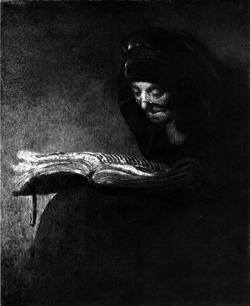
1. REMBRANDT'S MOTHER READING THE BIBLE. ABOUT 1629. WILTON HOUSE, EARL OF PEMBROKE
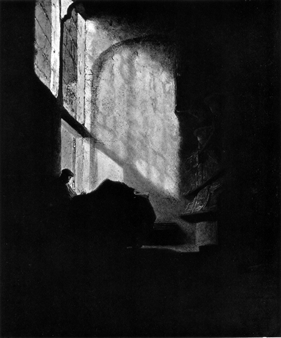
2. A SCHOLAR IN A LOFTY ROOM. ABOUT 1630. LONDON, NATIONAL GALLERY
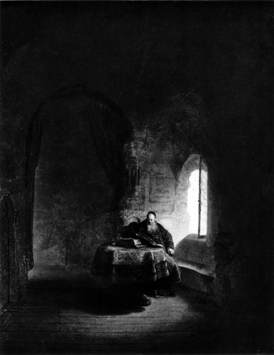
3. A SCHOLAR STUDYING (ST. ANASTASIUS) 1631. STOCKHOLM, NATIONAL MUSEUM
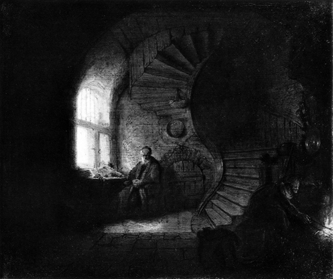
4. A SCHOLAR IN A ROOM WITH A WINDING STAIR. 1633. PARIS, LOUVRE
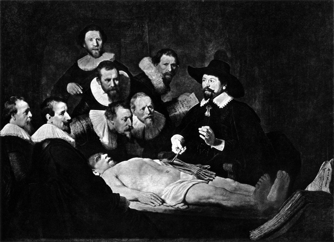
5. THE ANATOMY LESSON OF PROFESSOR TULP. 1632. THE HAGUE, MAURITSHUIS
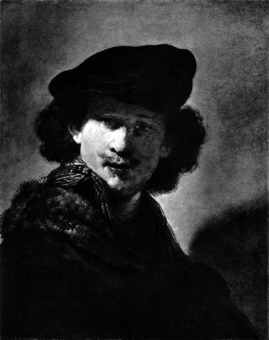
6. SELF-PORTRAIT. 1634. BERLIN, KAISER FRIEDRICH MUSEUM

7. SASKIA, THE ARTIST'S FIRST WIFE. 1633. DRESDEN, GALLERY
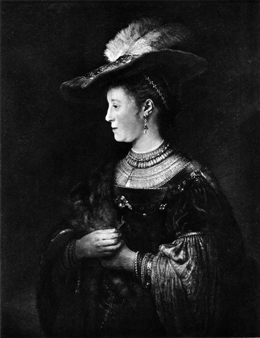
8. SASKIA. ABOUT 1634. CASSEL, GALLERY

9. THE ARTIST WITH HIS WIFE SASKIA. ABOUT 1634. DRESDEN, GALLERY
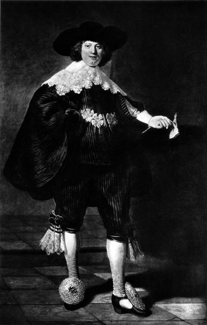
10. PORTRAIT OF MAERTEN DAEY. 1634. PARIS, BARON ROBERT DE ROTHSCHILD
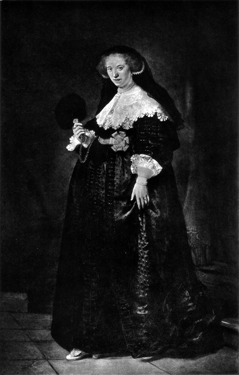
11. PORTRAIT OF MACHTELD VAN DOORN. 1634. PARIS, BARON ROBERT DE ROTHSCHILD
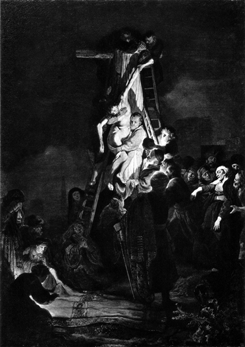
12. THE DESCENT FROM THE CROSS. 1634. LENINGRAD, HERMITAGE
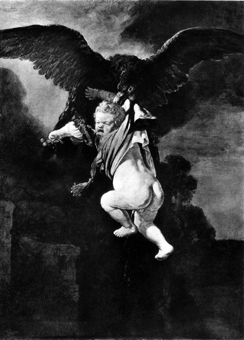
13. THE RAPE OF GANYMEDE. 1635. DRESDEN, GALLERY
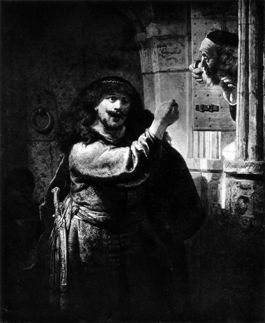
14. SAMSON THREATENING HIS FATHER-IN-LAW. 1635. BERLIN, KAISER FRIEDRICH MUSEUM
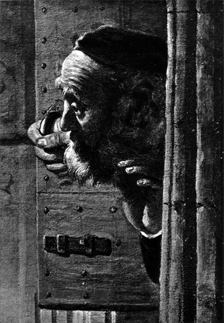
15. SAMSON'S FATHER-IN-LAW. (DETAIL OF PLATE 14)
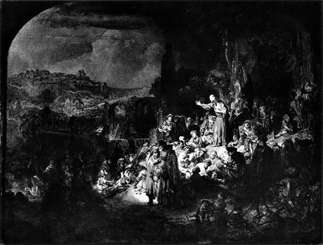
16. ST. JOHN THE BAPTIST PREACHING. ABOUT 1636. BERLIN, KAISER FRIEDRICH MUSEUM
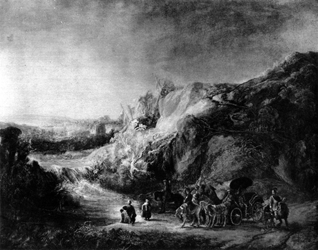
17. LANDSCAPE WITH THE BAPTISM OF THE EUNUCH. 1636. LONDON, PRIVATE COLLECTION
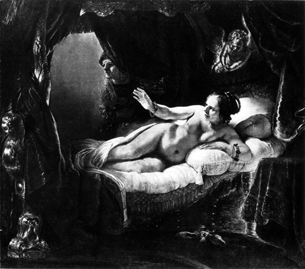
18. DANAË. 1636. LENINGRAD, HERMITAGE
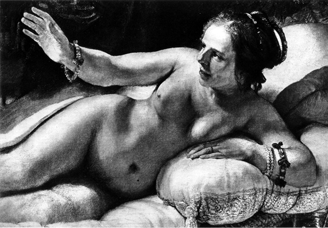
19. SASKIA AS DANAË. (DETAIL OF PLATE 18)
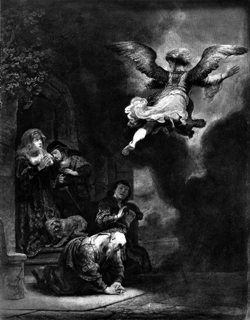
20. THE ANGEL LEAVING TOBIAS. 1637. PARIS, LOUVRE
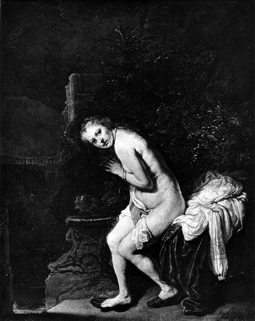
21. SUSANNA AT THE BATH. (MODEL: SASKIA.) 1637. THE HAGUE, MAURITSHUIS
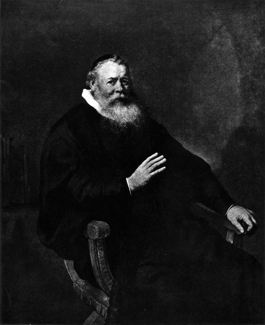
22. PORTRAIT OF ELEAZAR SWALMIUS, MINISTER OF AMSTERDAM. 1637. ANTWERP, MUSEUM

23. "REMBRANDT'S MOTHER". 1639. VIENNA, GALLERY
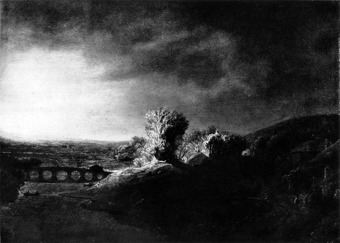
24. STORMY LANDSCAPE. ABOUT 1638. BERLIN, KAISER FRIEDRICH MUSEUM
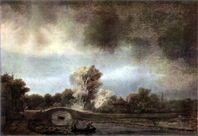
25. LANDSCAPE WITH A STONE BRIDGE. ABOUT 1638. AMSTERDAM, RIJKSMUSEUM
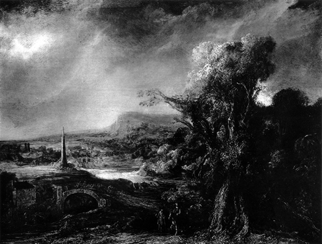
26. LANDSCAPE WITH AN OBELISK. 1638. BOSTON, ISABELLA STEWART GARDNER MUSEUM
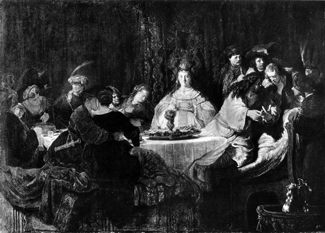
27. SAMSON'S WEDDING. 1638. DRESDEN, GALLERY
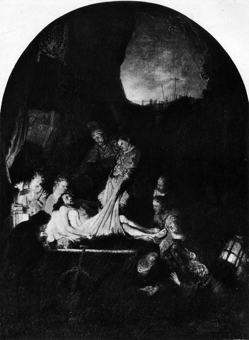
28. THE ENTOMBMENT OF CHRIST. 1639. MUNICH, ÄLTERE PINAKOTHEK
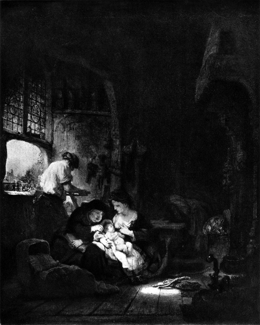
29. THE HOLY FAMILY. 1640. PARIS, LOUVRE
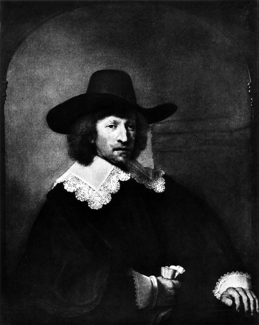
30. PORTRAIT OF A GENTLEMAN. 1641. BRUSSELS, MUSEUM
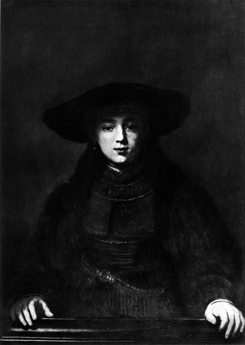
31. YOUNG GIRL AT A WINDOW. 1641. VIENNA, COUNT LANCKORONSKI
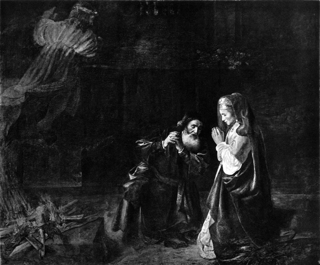
32. MANOAH'S SACRIFICE. 1641. DRESDEN, GALLERY
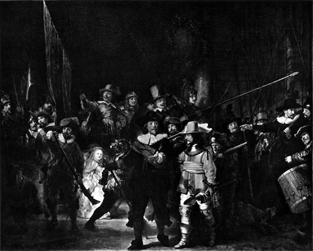
33. "THE NIGHT WATCH". 1642. AMSTERDAM, RIJKSMUSEUM
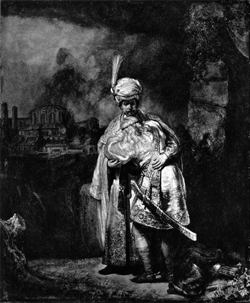
34. THE RECONCILIATION OF DAVID AND ABSALOM. 1642. LENINGRAD, HERMITAGE
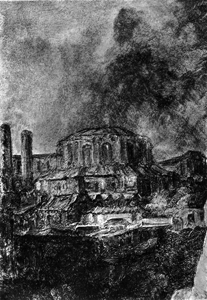
35. THE TEMPLE OF JERUSALEM. (DETAIL OF PLATE 34)
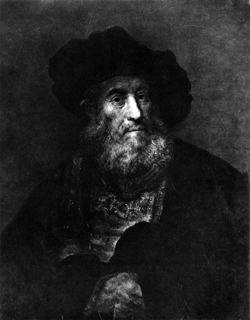
36. PORTRAIT OF A RABBI. 1642. NEW YORK, METROPOLITAN MUSEUM

37. SASKIA. POSTHUMOUS PORTRAIT, 1643. BERLIN, KAISER FRIEDRICH MUSEUM
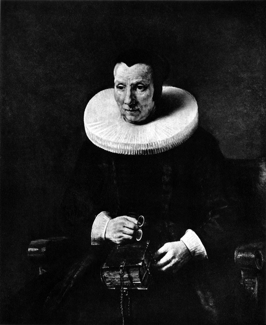
38. OLD WOMAN WITH A PRAYER BOOK. 1643. WASHINGTON, NATIONAL MUSEUM OF ART
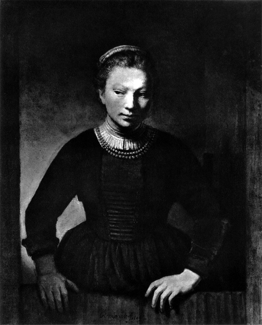
39. GIRL IN A DOORWAY. 1645. CHICAGO, ART INSTITUTE
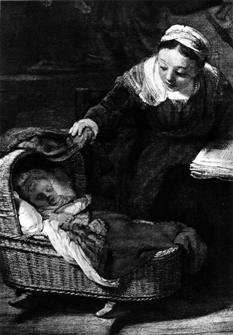
40. MOTHER AND CHILD. (DETAIL OF PLATE 41)
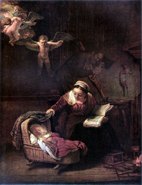
41. THE HOLY FAMILY WITH ANGELS. 1645. LENINGRAD, HERMITAGE
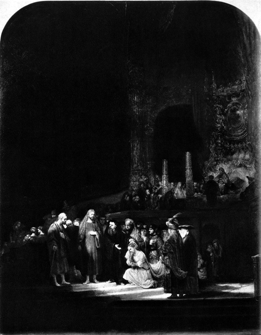
42. THE WOMAN TAKEN IN ADULTERY. 1644. LONDON, NATIONAL GALLERY
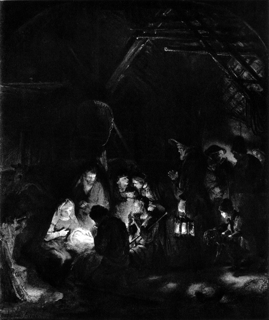
43. THE ADORATION OF THE SHEPHERDS. 1646. LONDON, NATIONAL GALLERY
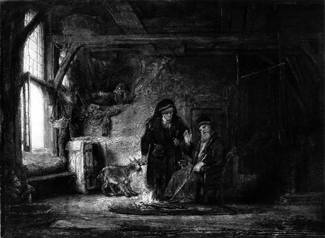
44. TOBIT AND HIS WIFE. 1645. BERLIN, KAISER FRIEDRICH MUSEUM
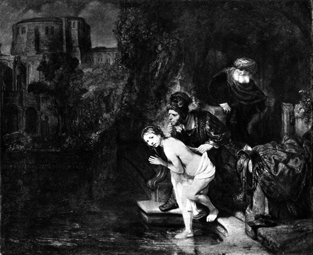
45. SUSANNA AND THE ELDERS. 1647. BERLIN, KAISER FRIEDRICH MUSEUM
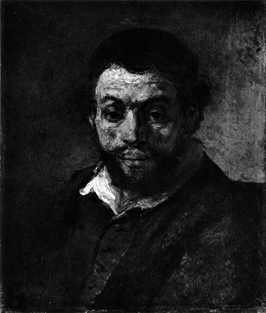
46. PORTRAIT OF A JEW. ABOUT 1648. BERLIN, KAISER FRIEDRICH MUSEUM
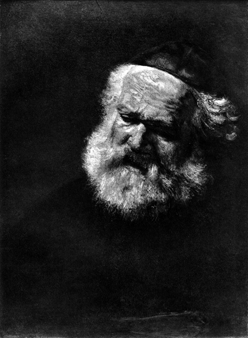
47. PORTRAIT OF AN OLD JEW. ABOUT 1648. DUBLIN, NATIONAL GALLERY
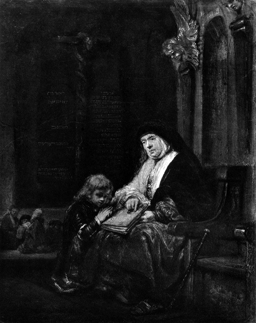
48. TIMOTHY AND HIS GRANDMOTHER. 1648. LONDON, EARL OF ELLESMERE
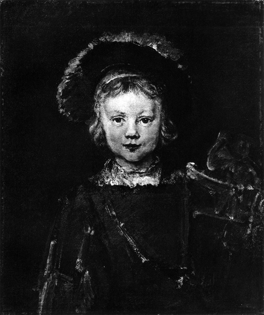
49. TITUS, REMBRANDT'S SON (1641-1668). ABOUT 1648. RICHMOND, COOK COLLECTION
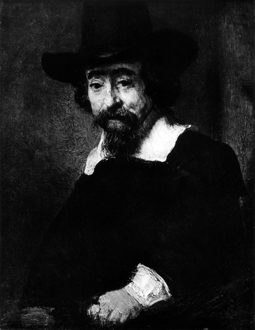
50. PORTRAIT OF THE JEWISH PHYSICIAN EPHRAIM BUËNO. ABOUT 1647. AMSTERDAM, F. MANNHEIMER
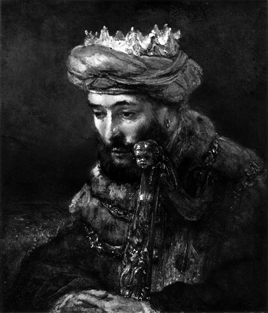
51. KING DAVID. 1651. NEW YORK, ALBERT KELLER
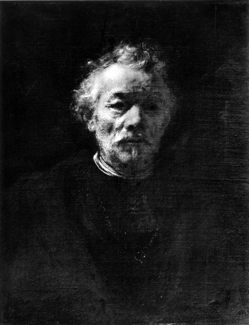
52. "REMBRANDT’S BROTHER". ABOUT 1650. PARIS, LOUVRE
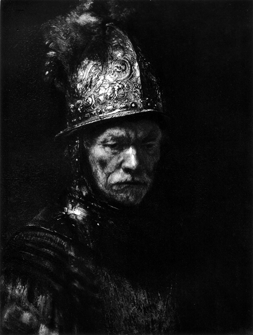
53. MAN WITH A GOLDEN HELMET. ABOUT 1650. BERLIN, KAISER FRIEDRICH MUSEUM
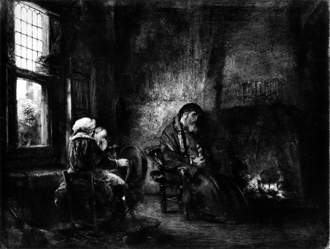
54. TOBIT AND HIS WIFE. 1659. RICHMOND, COOK COLLECTION
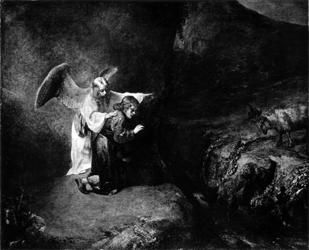
55. THE VISION OF DANIEL. ABOUT 1650. BERLIN, KAISER FRIEDRICH MUSEUM
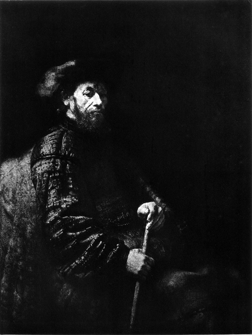
56. A JEWISH MERCHANT. ABOUT 1650. LONDON, NATIONAL GALLERY
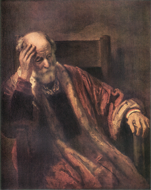
57. AN OLD JEW SEATED. 1652. CHATSWORTH, DUKE OF DEVONSHIRE
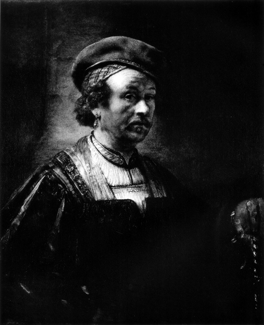
58. SELF-PORTRAIT. 1650. PHILADELPHIA, JOSEPH E. WIDENER
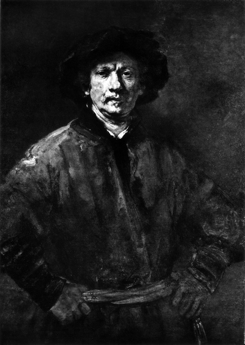
59. SELF-PORTRAIT. 1652. VIENNA, GALLERY
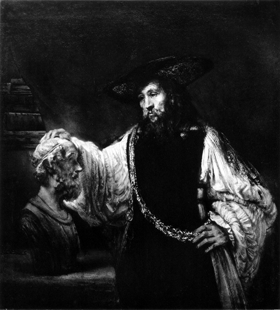
60. ARISTOTLE CONTEMPLATING A BUST OF HOMER. 1653. NEW YORK, LORD DUVEEN
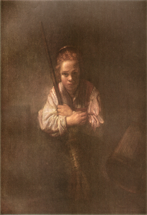
61. GIRL WITH A BROOM. 1654. LENINGRAD, HERMITAGE
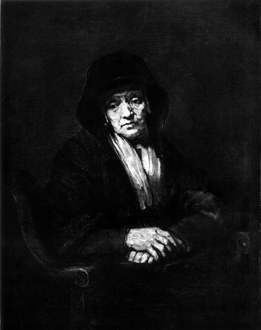
62. OLD WOMAN IN AN ARMCHAIR. 1654. LENINGRAD, HERMITAGE
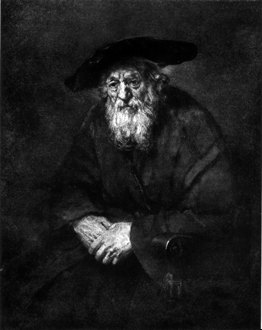
63. OLD JEW IN AN ARMCHAIR. 1654. LENINGRAD, HERMITAGE
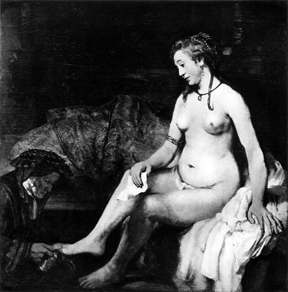
64. BATHSHEBA AT HER TOILET. (MODEL: HENDRICKJE STOFFELS.) 1654. PARIS, LOUVRE
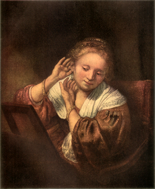
65. YOUNG WOMAN AT HER MIRROR. 1654. LENINGRAD, HERMITAGE
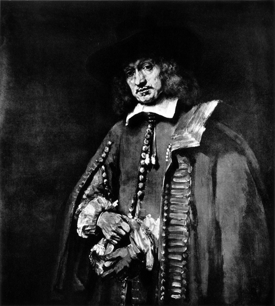
66. PORTRAIT OF JAN SIX. 1654. AMSTERDAM, SIX FAMILY

67. SELF-PORTRAIT. 1655. BERLIN, G. v. MENDELSSOHN
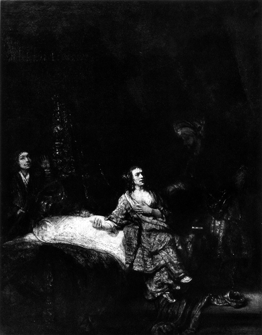
68. POTIPHAR'S WIFE ACCUSING JOSEPH. 1655. BERLIN, KAISER FRIEDRICH MUSEUM
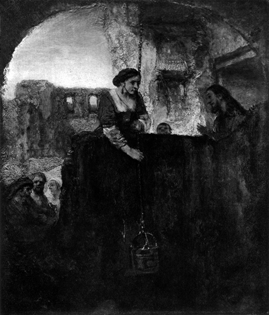
69. CHRIST AND THE WOMAN OF SAMARIA. 1655. BERLIN, KAISER FRIEDRICH MUSEUM
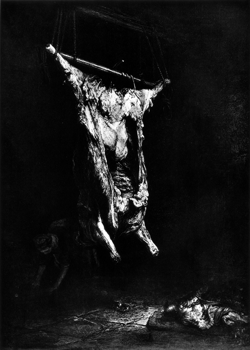
70. THE SLAUGHTER-HOUSE. ABOUT 1655. GLASGOW, ART GALLERY
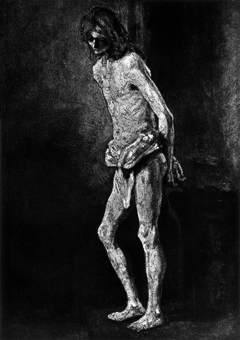
71. CHRIST AT THE COLUMN. ABOUT 1655. COLOGNE, MUSEUM
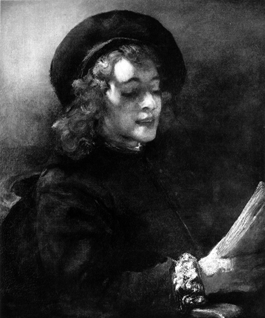
72. BOY READING. ABOUT 1656. VIENNA, GALLERY
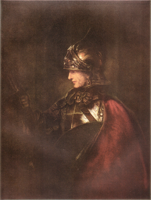
73. MARS. 1655. GLASGOW, ART GALLERY
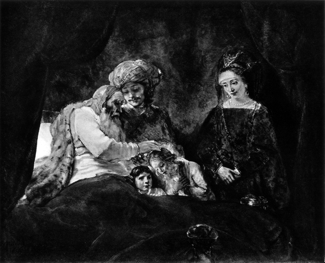
74. JACOB BLESSING HIS GRANDCHILDREN. 1656. CASSEL, GALLERY
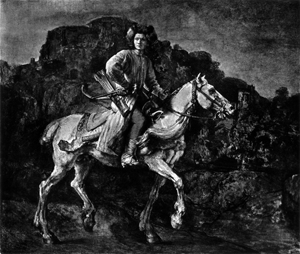
75. "THE POLISH RIDER." ABOUT 1656. NEW YORK, FRICK ART MUSEUM
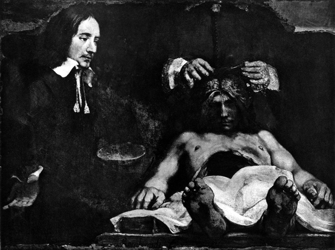
76. THE ANATOMY LESSON OF DOCTOR DEIJMAN. FRAGMENT OF A PAINTING, 1656. AMSTERDAM, RIJKSMUSEUM
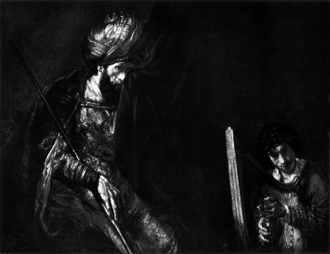
77. DAVID PLAYING THE HARP BEFORE SAUL. ABOUT 1656. THE HAGUE, MAURITSHUIS
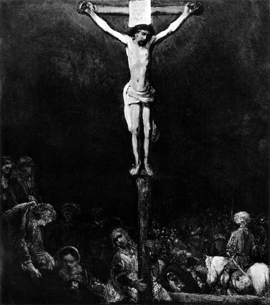
78. CHRIST ON THE CROSS. 1656. LONDON, H. M. CLARK

79. ADORATION OF THE MAGI. 1657. LONDON, BUCKINGHAM PALACE
Reproduced by gracious permission of His Majesty The King
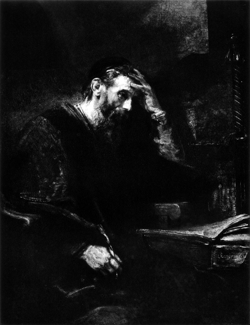
80. ST. PAUL. ABOUT 1657. PHILADELPHIA, JOSEPH E. WIDENER

81. SELF-PORTRAIT. 1659. WASHINGTON, NATIONAL GALLERY OF ART
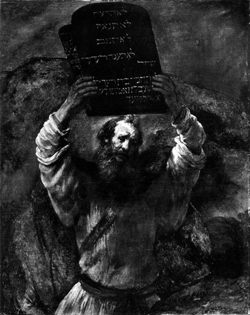
82. MOSES SHOWING THE TABLES OF THE LAW. 1659. BERLIN, KAISER FRIEDRICH MUSEUM
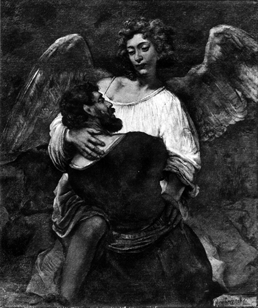
83. JACOB WRESTLING WITH THE ANGEL. ABOUT 1659. BERLIN, KAISER FRIEDRICH MUSEUM
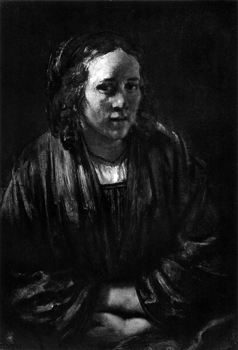
84. HENDRICKJE STOFFELS. ABOUT 1659. BERLIN, A. v. MENDELSSOHN
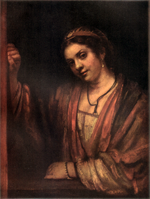
85. HENDRICKJE STOFFELS. ABOUT 1659. BERLIN, KAISER FRIEDRICH MUSEUM
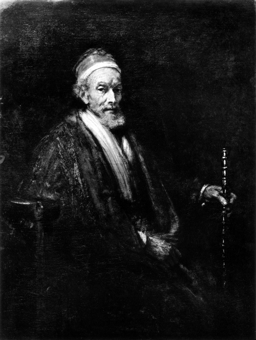
86. PORTRAIT OF THE MERCHANT JACOB TRIP. ABOUT 1660. LONDON, NATIONAL GALLERY
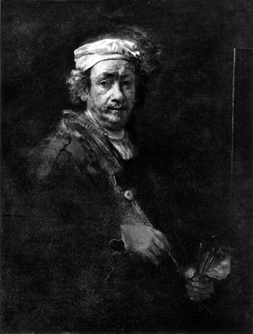
87. SELF-PORTRAIT AT THE EASEL. 1660. PARIS, LOUVRE
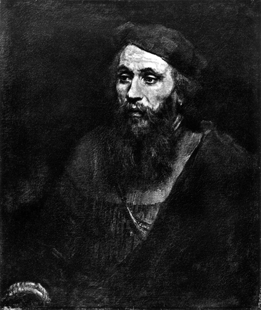
88. PORTRAIT OF A BEARDED MAN. 1661. LENINGRAD, HERMITAGE
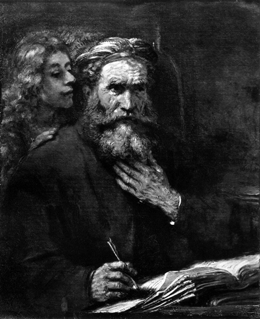
89. AN ANGEL DICTATING TO ST. MATTHEW. 1661. PARIS, LOUVRE
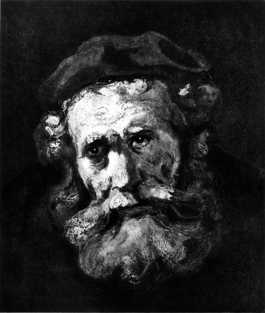
90. STUDY OF A HEAD. ABOUT 1661. BAYONNE, MUSEE BONNAT
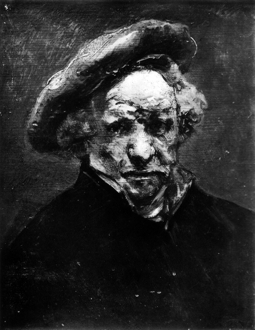
91. SELF-PORTRAIT. ABOUT 1661. AIX-EN-PROVENCE, MUSEUM
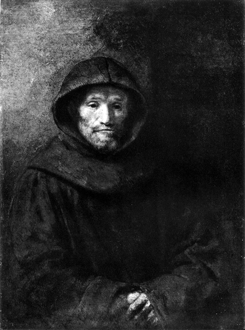
92. CAPUCHIN FRIAR. ABOUT 1661. LONDON, NATIONAL GALLERY
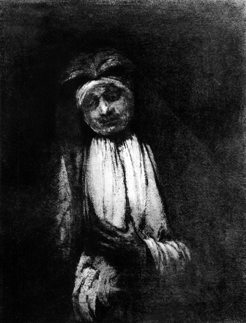
93. PORTRAIT OF A NUN. 1661. ÉPINAL, MUSÉE DES VOSGES
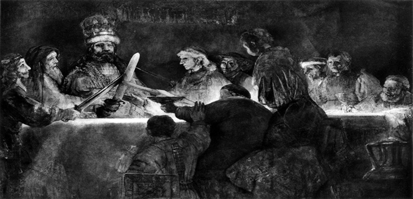
94. THE CONSPIRACY OF THE BATAVIANS. 1661. STOCKHOLM, NATIONAL MUSEUM
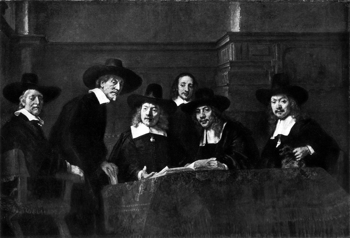
95. THE "STAALMEESTERS". 1661. AMSTERDAM, RIJKSMUSEUM
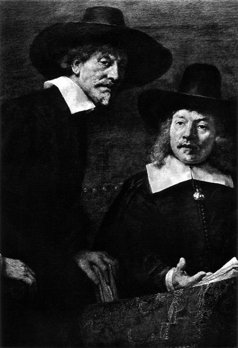
96. TWO "STAALMEESTERS". (DETAIL OF PLATE 95)
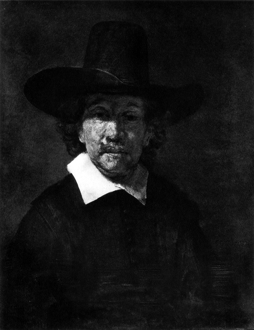
97. THE POET JEREMIAS DE DECKER. 1666. LENINGRAD, HERMITAGE
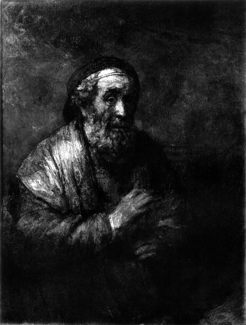
98. HOMER. 1663. THE HAGUE, MAURITSHUIS
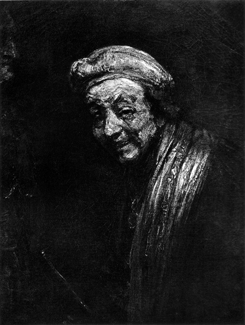
99. SELF-PORTRAIT. ABOUT 1663. COLOGNE, MUSEUM
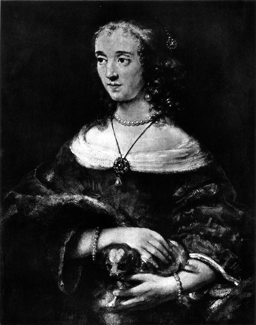
100. LADY WITH A LAP DOG. ABOUT 1665. TORONTO, FRANK T. WOOD

101. LUCRETIA. 1666. MINNEAPOLIS, INSTITUTE OF ARTS
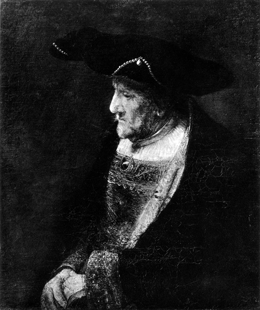
102. OLD MAN, DRESSED IN GOLD AND BLACK. ABOUT 1667. DRESDEN, GALLERY
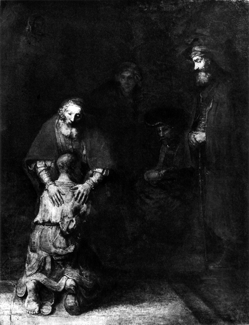
103. THE RETURN OF THE PRODIGAL SON. ABOUT 1669. LENINGRAD, HERMITAGE

104. THE FATHER WELCOMES THE PRODIGAL SON. (DETAIL OF PLATE 103)
| AIX-EN-PROVENCE, Museum | |
| Self-portrait, 91 | |
| AMSTERDAM, Rijksmuseum | |
| Landscape with a Stone Bridge, 25 | |
| "The Night Watch," 33 | |
| The Anatomy Lesson of Dr. Deyman, 76 | |
| The "Staalmeesters," 95, 96 | |
| AMSTERDAM, Dr. F. Mannheimer (late) | |
| Portrait of Ephraim Bonus, Jewish Physician, 50 | |
| AMSTERDAM, Six Family | |
| Portrait of Jan Six, 66 | |
| ANTWERP, Museum | |
| Portrait of Eleazar Swalmius, Minister of Amsterdam, 22 | |
| BAYONNE, Musée Bonnat | |
| Study of a Head, 90 | |
| BERLIN, Kaiser Friedrich Museum | |
| Portrait of the Artist, 6 | |
| Samson Threatening his Father-in-Law, 14, 15 | |
| St. John the Baptist Preaching, 16 | |
| Stormy Landscape, 24 | |
| Saskia: Posthumous Portrait, 37 | |
| Tobit and His Wife, 43 | |
| Susanna and the Elders, 45 | |
| Portrait of a Jew, 46 | |
| Man with a Golden Helmet, 53 | |
| The Vision of Daniel, 55 | |
| Potiphar's Wife Accusing Joseph, 68 | |
| Christ and the Woman of Samaria, 69 | |
| Moses Showing the Tables of the Law to the People, 82 | |
| Jacob Wrestling with the Angel, 83 | |
| Hendrickje Stoffels, 85 | |
| BERLIN, Frau G. von Mendelssohn | |
| Self-portrait, 67 | |
| Hendrickje Stoffels, 84 | |
| BOSTON, Fenway Court, Isabella Stewart Gardner Museum | |
| Landscape with an Obelisk, 26 | |
| BRUSSELS, Museum | |
| Portrait of a Gentleman, 30 | |
| CASSEL, Gallery | |
| Saskia, 8 | |
| Jacob Blessing his Grandchildren, 74 | |
| CHATSWORTH, Duke of Devonshire | |
| An Old Jew Seated, 57 | |
| CHICAGO, Chicago Art Institute | |
| Girl in a Doorway, 39 | |
| COLOGNE, Museum | |
| Christ at the Column, 71 | |
| Rembrandt Laughing, 99 | |
| DRESDEN, Gallery | |
| Saskia, the Artist's Wife, 7 | |
| The Artist with his Wife Saskia, 9 | |
| The Rape of Ganymede, 13 | |
| Samson's Wedding, 27 | |
| Manoah's Sacrifice, 32 | |
| Old Man in Gold and Black, 102 | |
| DUBLIN, National Gallery of Ireland | |
| Portrait of an Old Man, 47 | |
| EPINAL, Musée des Vosges | |
| Portrait of a Nun, 93 | |
| GLASGOW, Glasgow Art Gallery | |
| The Slaughter-House, 70 | |
| Mars, 73 | |
| THE HAGUE, Mauritshuis | |
| The Anatomy Lesson of Professor Tulp, 5 | |
| Susanna at the Bath, 21 | |
| THE HAGUE, Dr. Abraham Bredius | |
| David Playing the Harp before Saul, 77 | |
| Homer, 98 | |
| LENINGRAD, Hermitage | |
| The Descent from the Cross, 12 | |
| Danaë, 18, 19 | |
| The Reconciliation of David and Absalom, 34, 35 | |
| The Holy Family with Angels, 40, 41 | |
| Girl with a Broom, 61 | |
| Old Woman in an Armchair, 62 | |
| Old Jew in an Armchair, 63 | |
| Young Woman at her Mirror, 65 | |
| Portrait of a Bearded Man, 88 | |
| The Poet Jeremias de Decker, 97 | |
| The Return of the Prodigal Son, 103, 104 | |
| LONDON, National Gallery | |
| A Scholar in a Lofty Room, 2 | |
| The Woman Taken in Adultery, 42 | |
| The Adoration of the Shepherds, 44 | |
| A Jew Merchant, 56 | |
| Portrait of the Merchant Jacob Trip, 86 | |
| A Capuchin Friar, 92 | |
| LONDON, Buckingham Palace, H.M. The King | |
| Adoration of the Magi, 79 | |
| LONDON, Earl of Ellesmere | |
| Timothy and His Grandmother Lois, 48 | |
| LONDON, Mr. H. M. Clark (formerly) | |
| Christ on the Cross, 78 | |
| LONDON, Messrs. P. & D. Colnaghi (formerly) | |
| Landscape with the Baptism of the Eunuch, 17 | |
| MINNEAPOLIS, Institute of Art | |
| Lucretia, 101 | |
| MUNICH, Aeltere Pinakothek | |
| The Entombment of Christ, 28 | |
| NEW YORK, Metropolitan Museum of Art | |
| Portrait of a Rabbi, 36 | |
| NEW YORK, Frick Art Museum | |
| "The Polish Rider," 75 | |
| NEW YORK, Mr. Albert Keller | |
| King David, 51 | |
| NEW YORK, Messrs. Duveen | |
| Aristotle Contemplating a Bust of Homer, 60 | |
| PARIS, Louvre | |
| A Scholar in a Room with a Winding Stair, 4 | |
| The Angel Leaving Tobias, 20 | |
| The Holy Family ("Le Ménage du Menuisier"), 29 | |
| "Rembrandt's Brother," 52 | |
| Bathsheba after her Bath, 64 | |
| Self-portrait at the Easel, 87 | |
| An Angel Dictating to St. Matthew, 89 | |
| PARIS, Baron Robert de Rothschild | |
| Portrait of Maerten Daey, 10 | |
| Portrait of Machteld van Doorn, 11 | |
| PHILADELPHIA, Mr. Joseph E. Widener | |
| Self-portrait, 58 | |
| St. Paul, 80 | |
| RICHMOND, Surrey, Doughty House, Cook Collection (formerly) | |
| Titus, Rembrandt's Son, 49 | |
| Tobit and His Wife, 54 | |
| STOCKHOLM, National Museum | |
| A Scholar Studying ("St. Anastasius"), 3 | |
| The Conspiracy of the Batavians, 94 | |
| TORONTO, Mr. Frank T. Wood | |
| Lady with a Lap Dog, 100 | |
| VIENNA, Gallery | |
| "Rembrandt's Mother," 23 | |
| Self-portrait, 59 | |
| Boy Reading, 72 | |
| VIENNA, Count Lanckoronski | |
| Young Girl at a Window, 31 | |
| WASHINGTON, National Gallery of Art | |
| Old Woman with a Book of Prayer, 38 | |
| Self-portrait, 81 | |
| WILTON HOUSE, Earl of Pembroke | |
| Rembrandt's Mother Reading the Bible, 1 | |
| Introduction | page | 5 | |
| Three Early Lives of Rembrandt: | |||
| (1) by Sandrart | page | 21 | |
| (2) by Baldinucci | page | 22 | |
| (3) by Houbraken | page | 23 | |
| Notes on the Plates | page | 29 | |
The following changes have been made:
Some small typesetting errors (duplicate words, missing punctuation) have been corrected.
For Plate 54, the date was changed to 1659.
The spellings of LAPDOG, Lap-Dog, and Lap Dog have been made consistent (Lap Dog).
The spellings of Rembrant and Rembrandt have been made consistent (Rembrandt).
The name of the painting has been made consistent as The Night Watch.
Sidenotes giving references to Plates have been inserted in the text and enclosed by [ ].
[The end of Rembrandt Selected Paintings by Prof. T. (Tancred) Borenius]